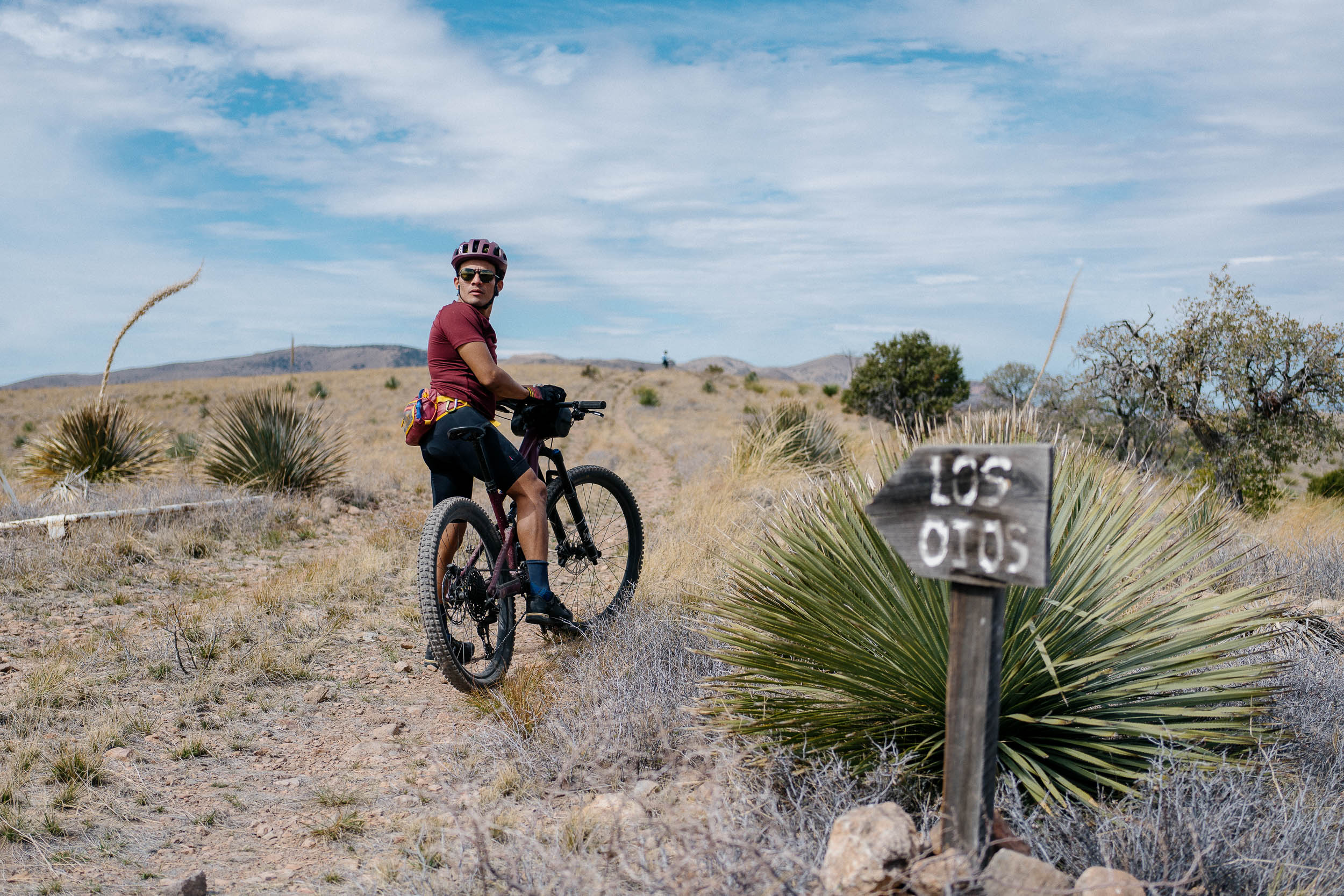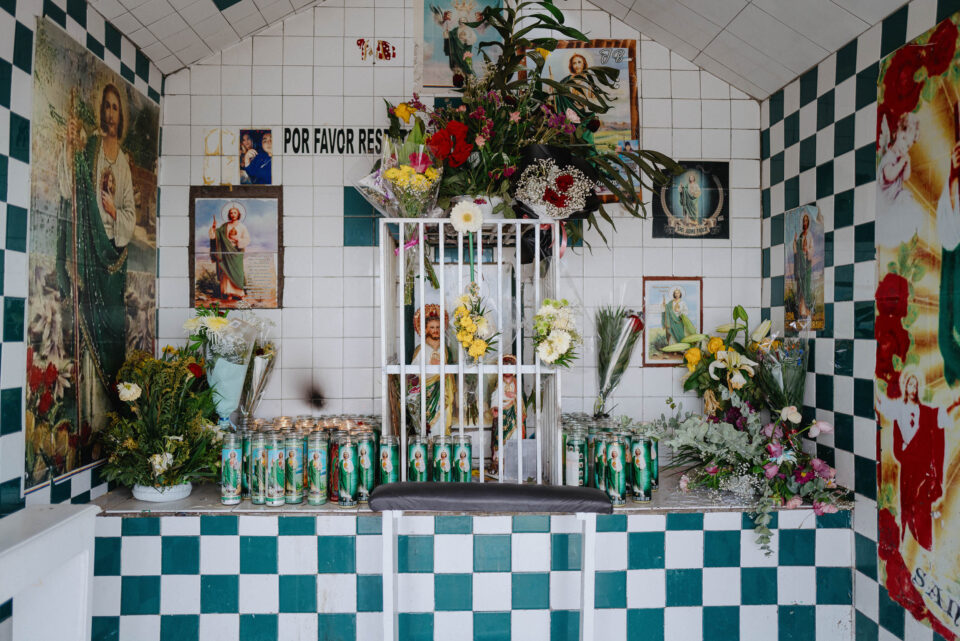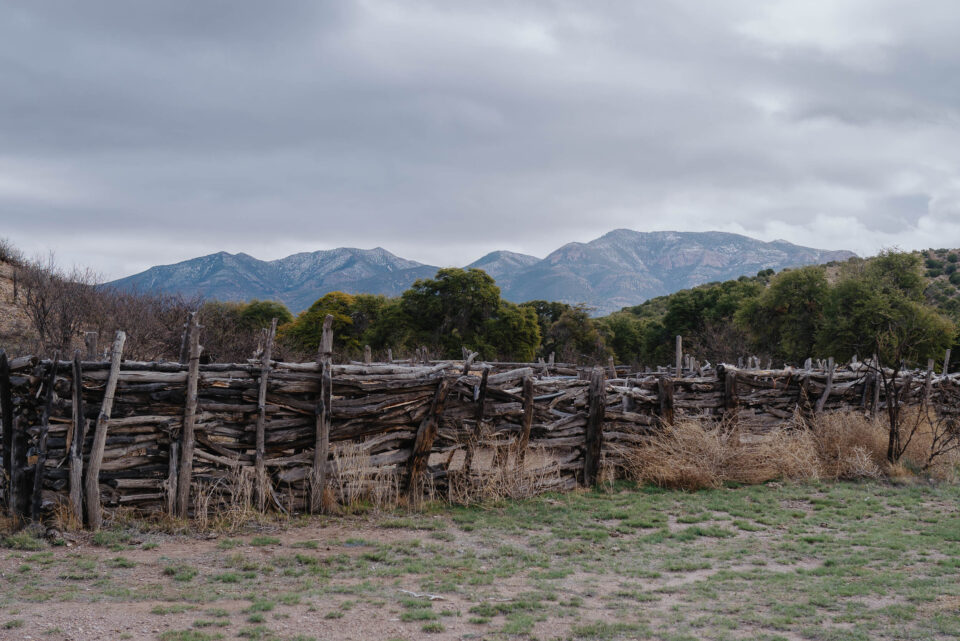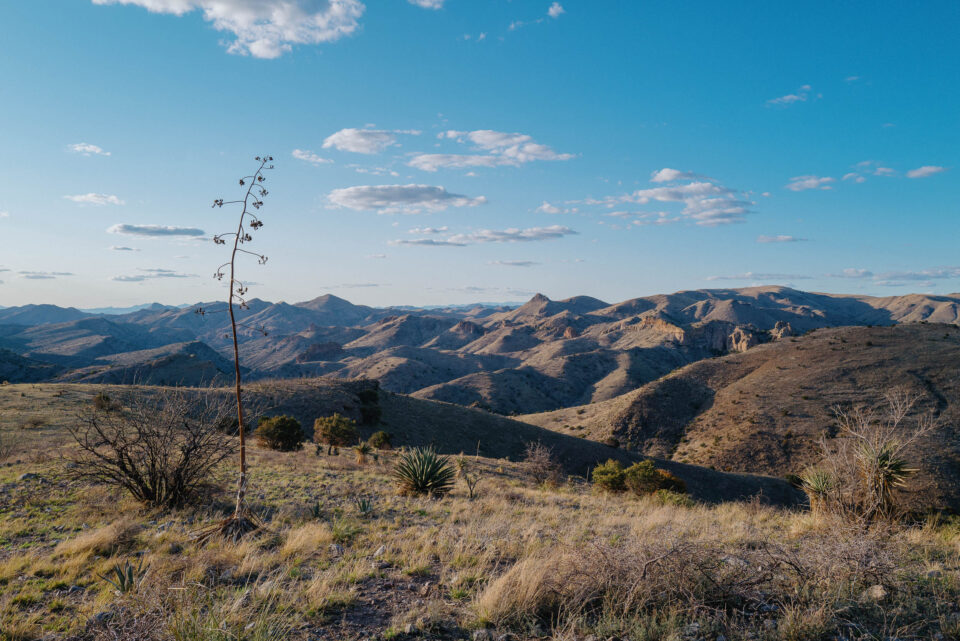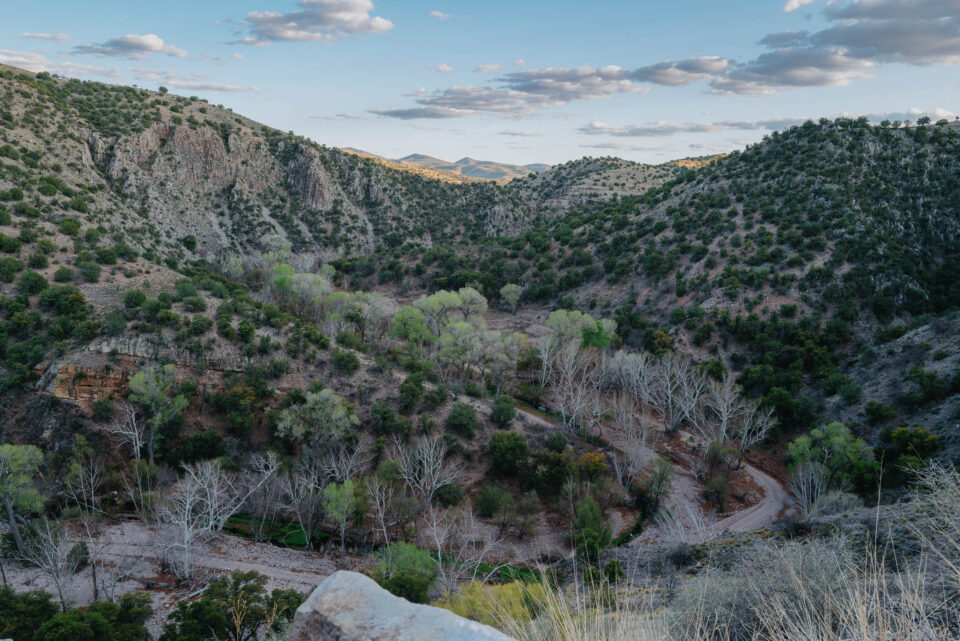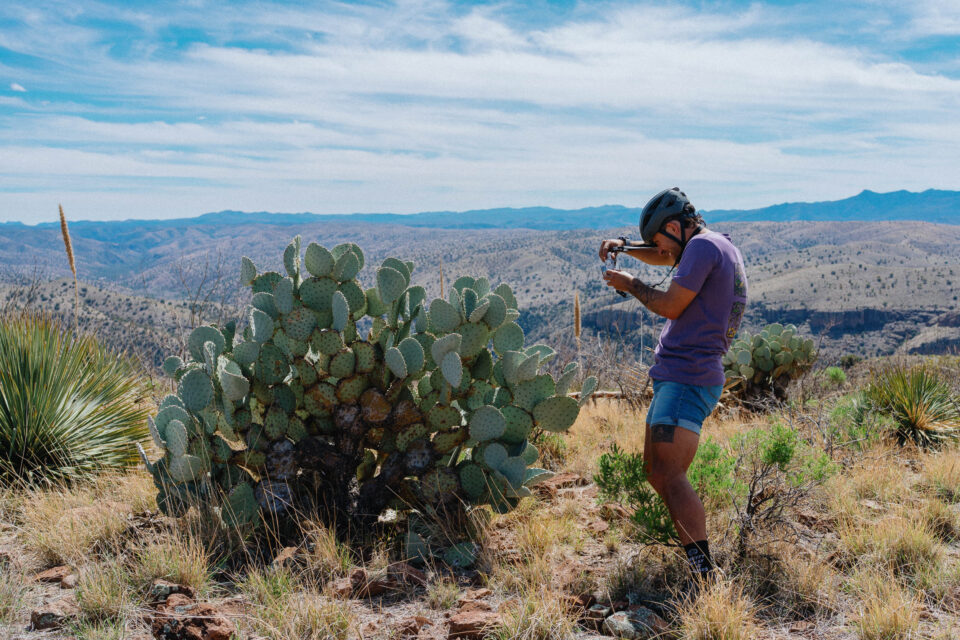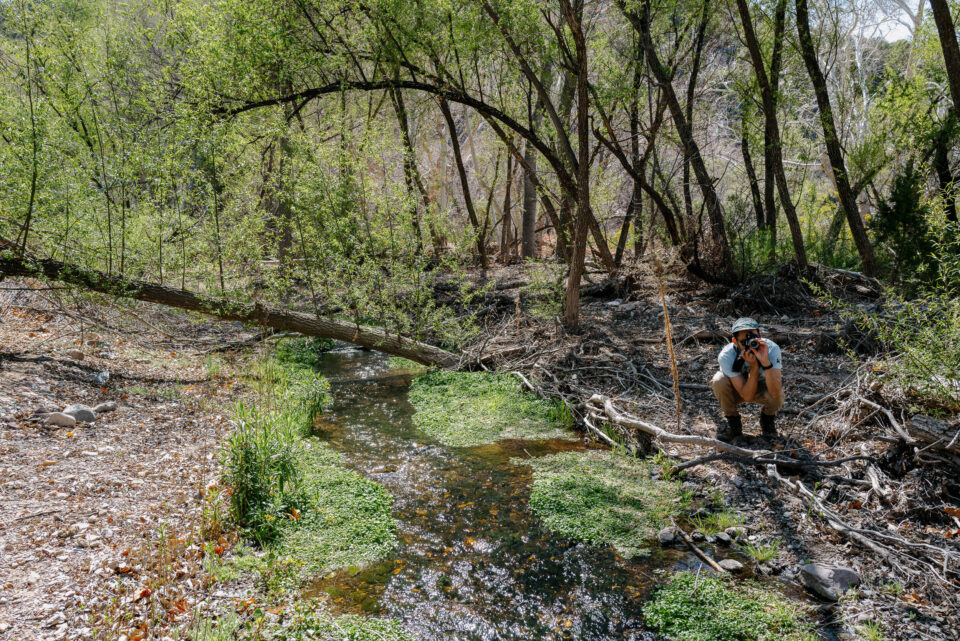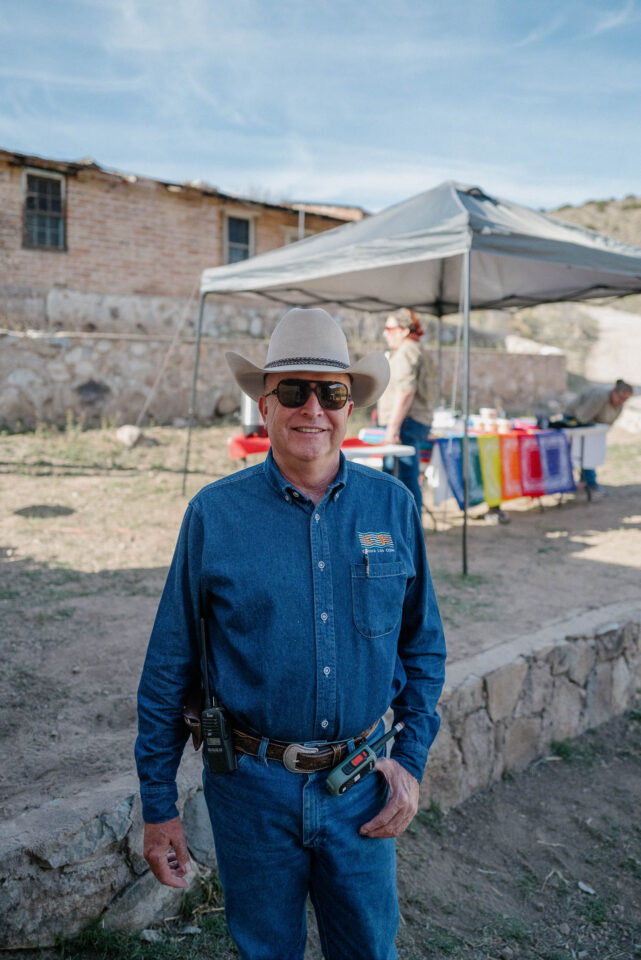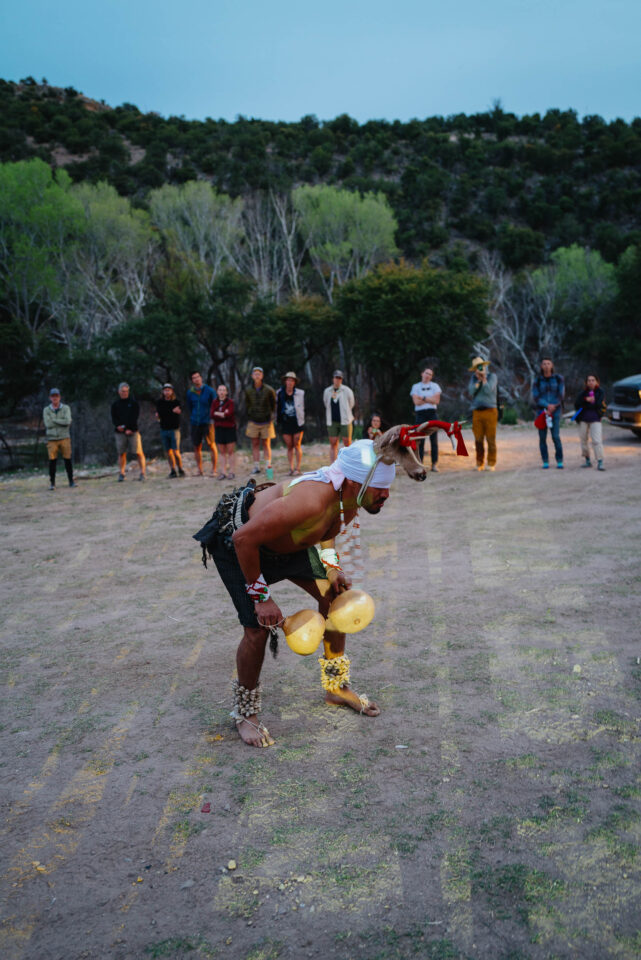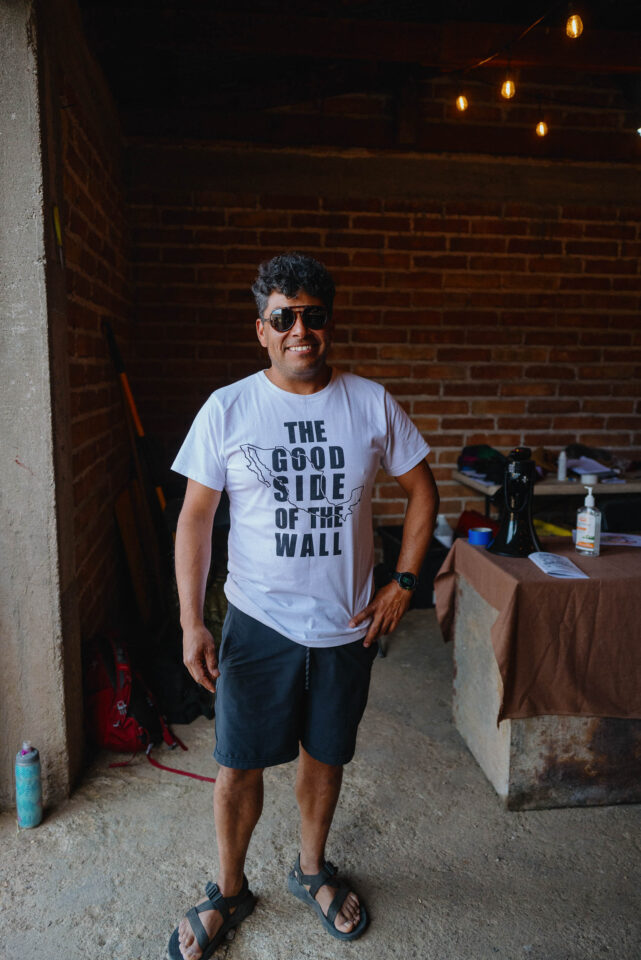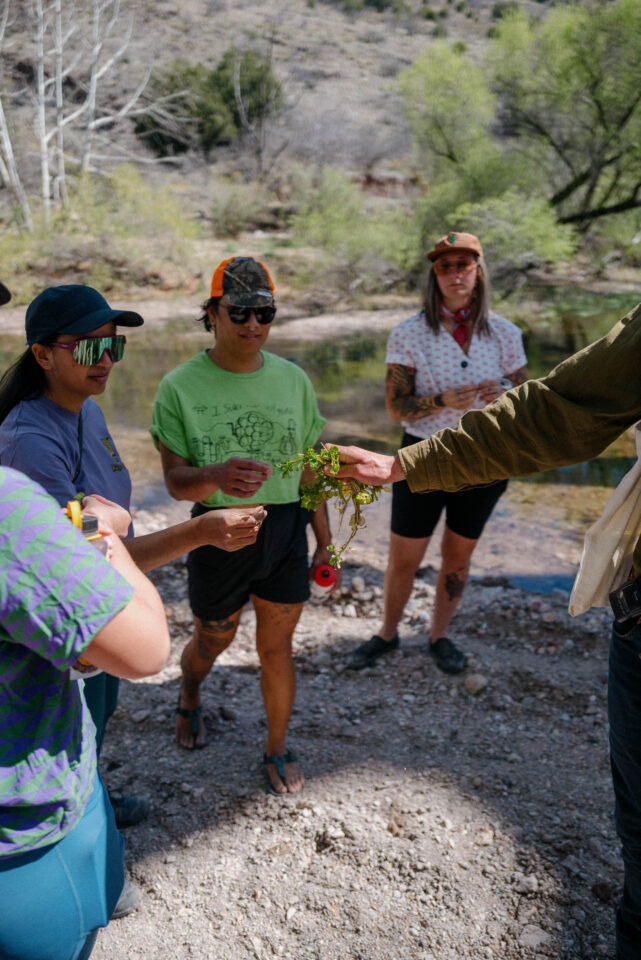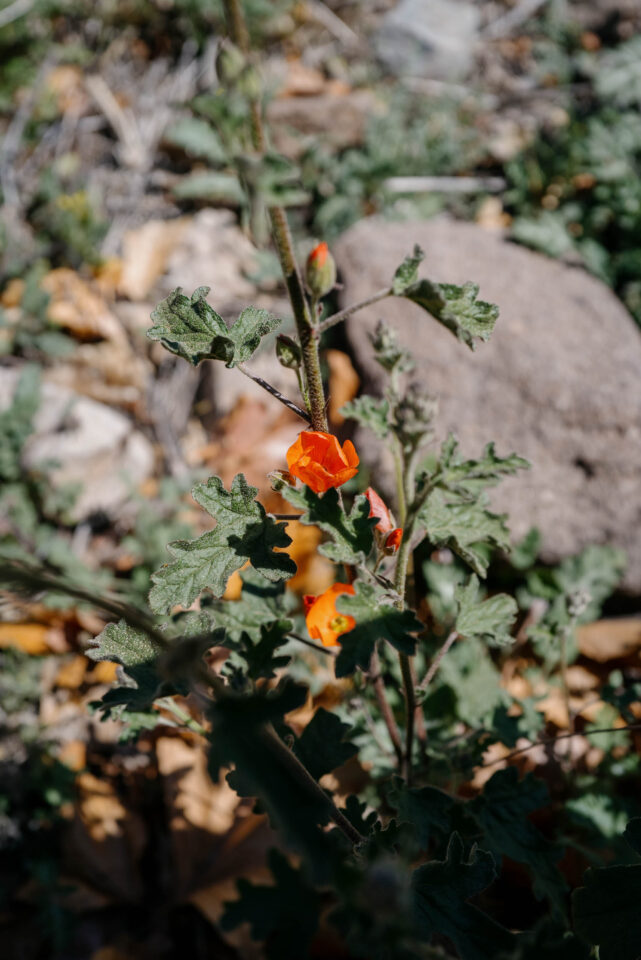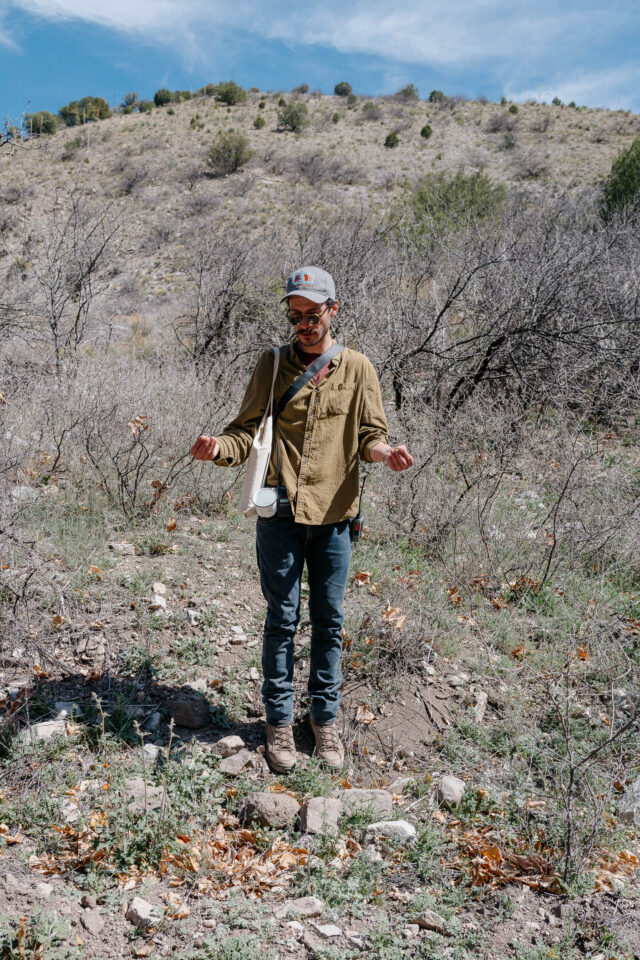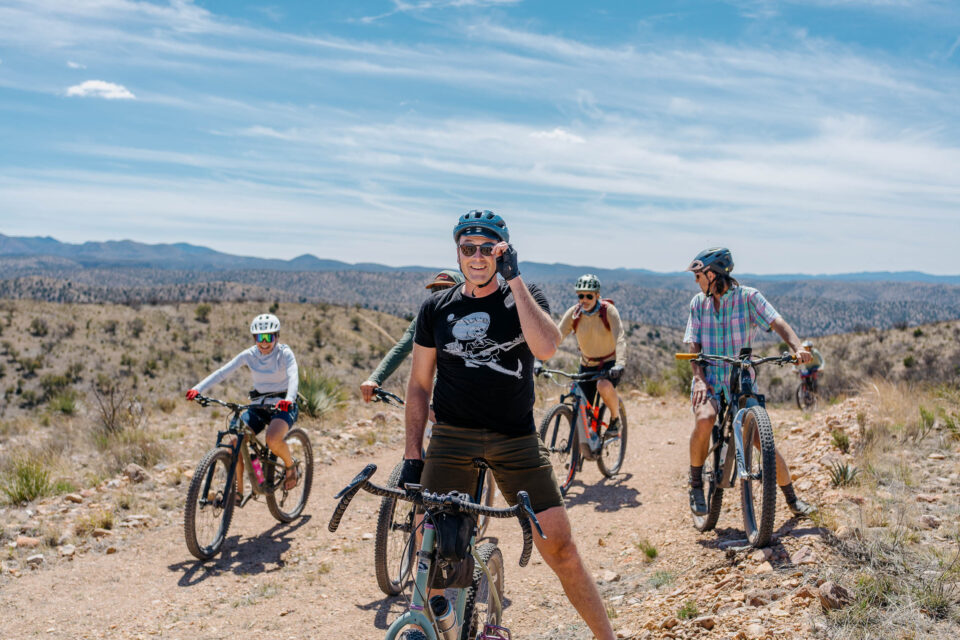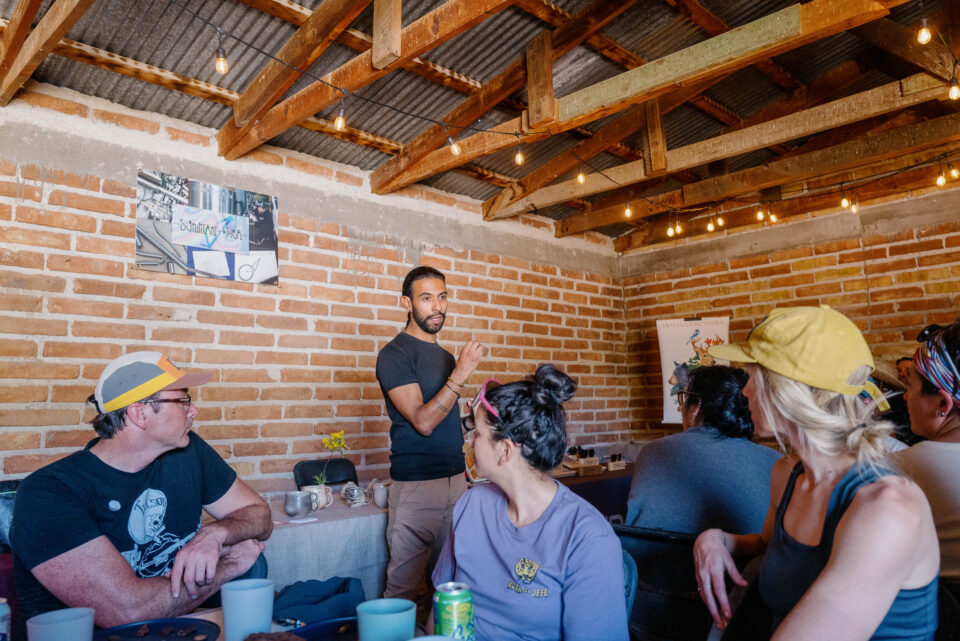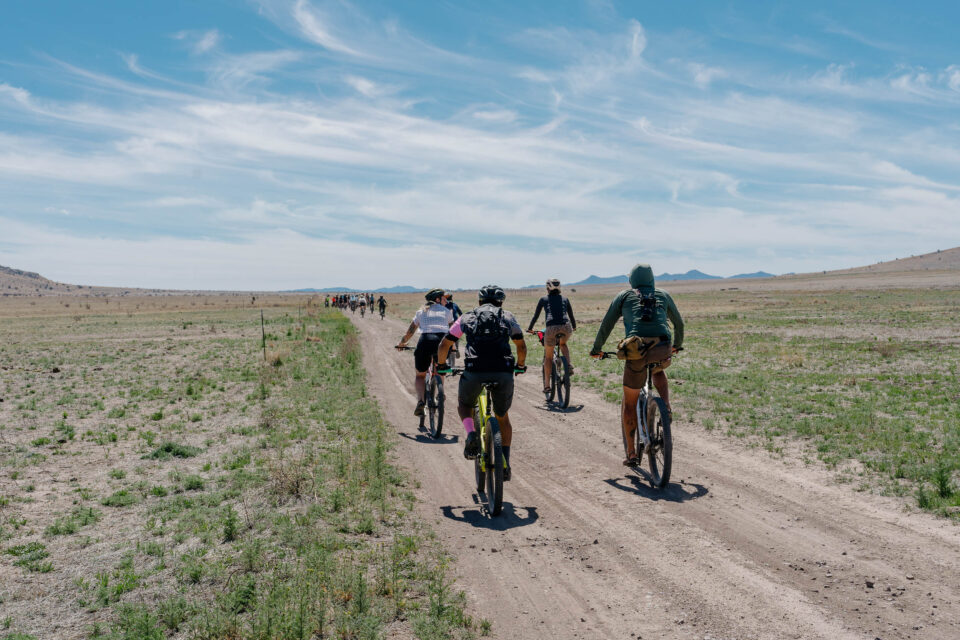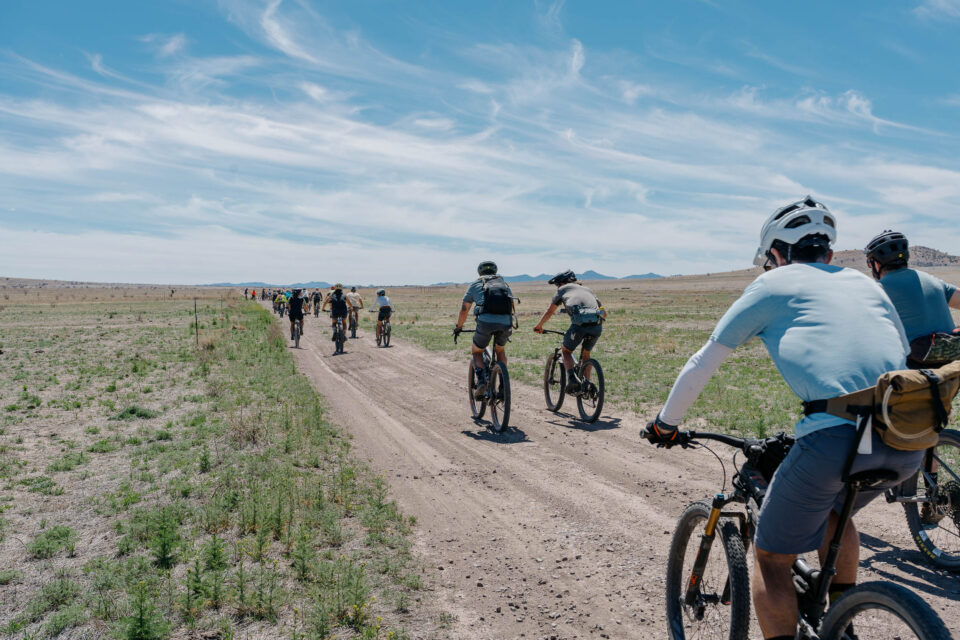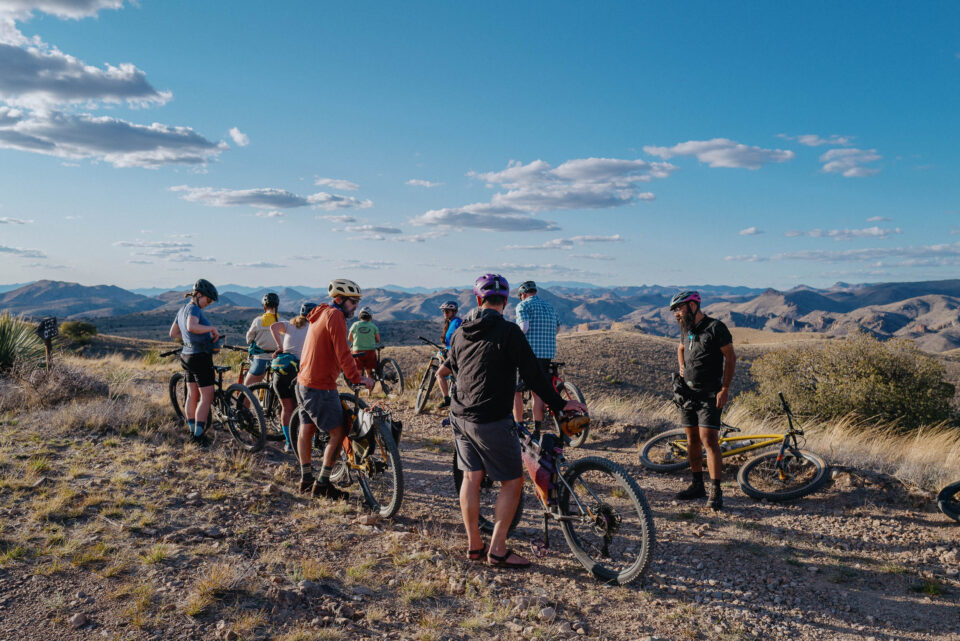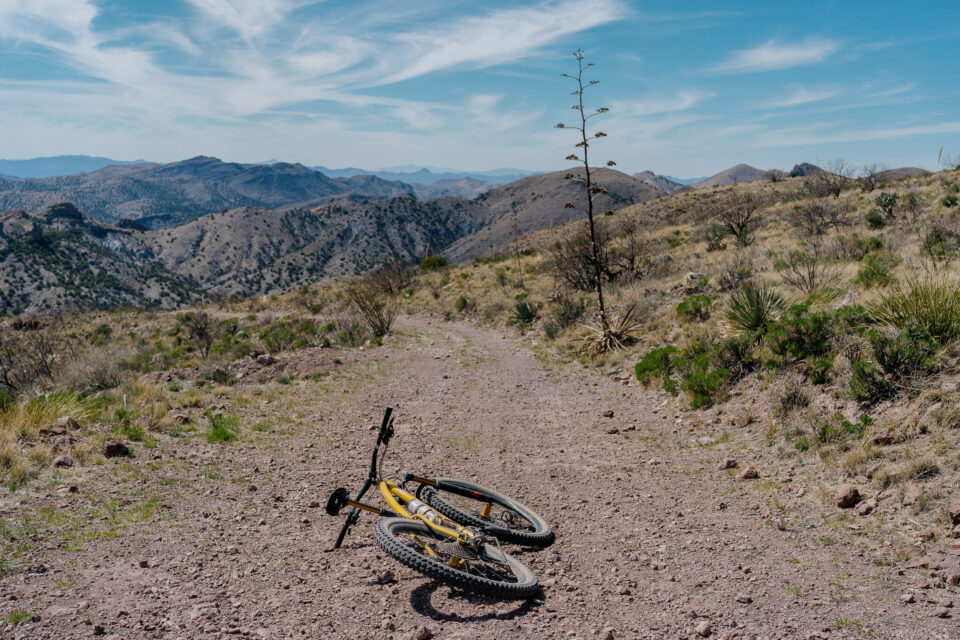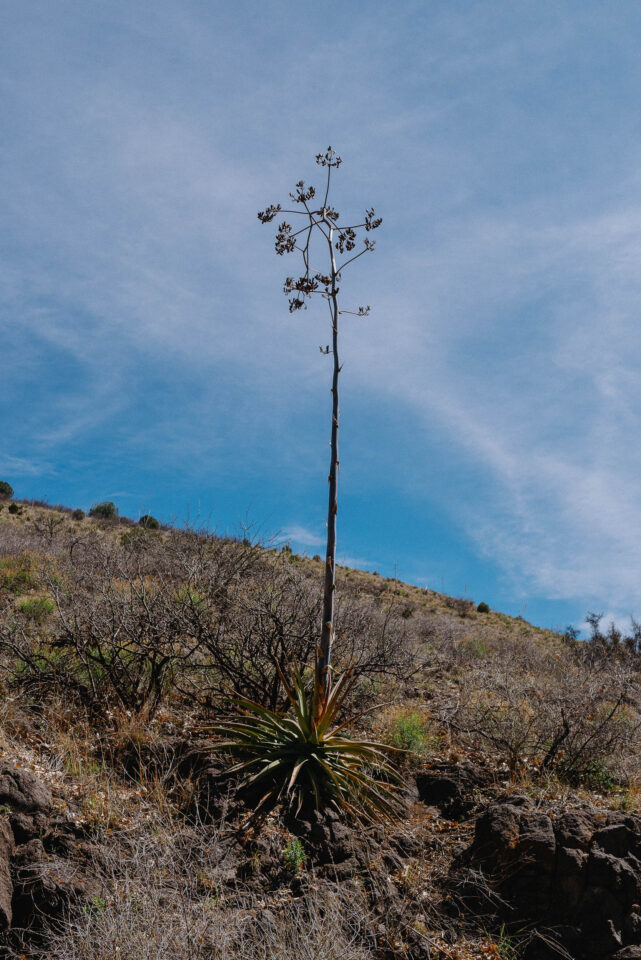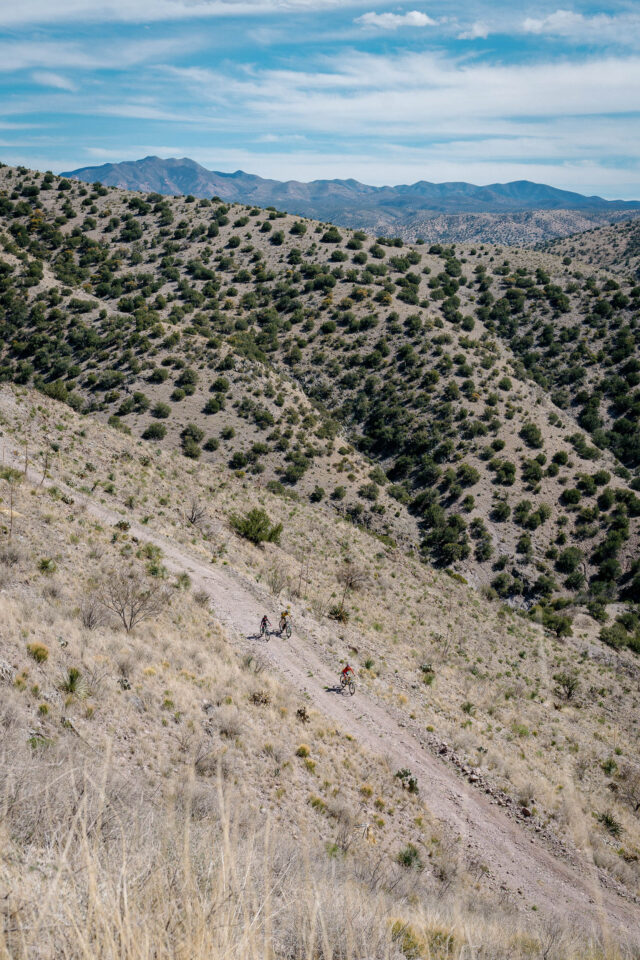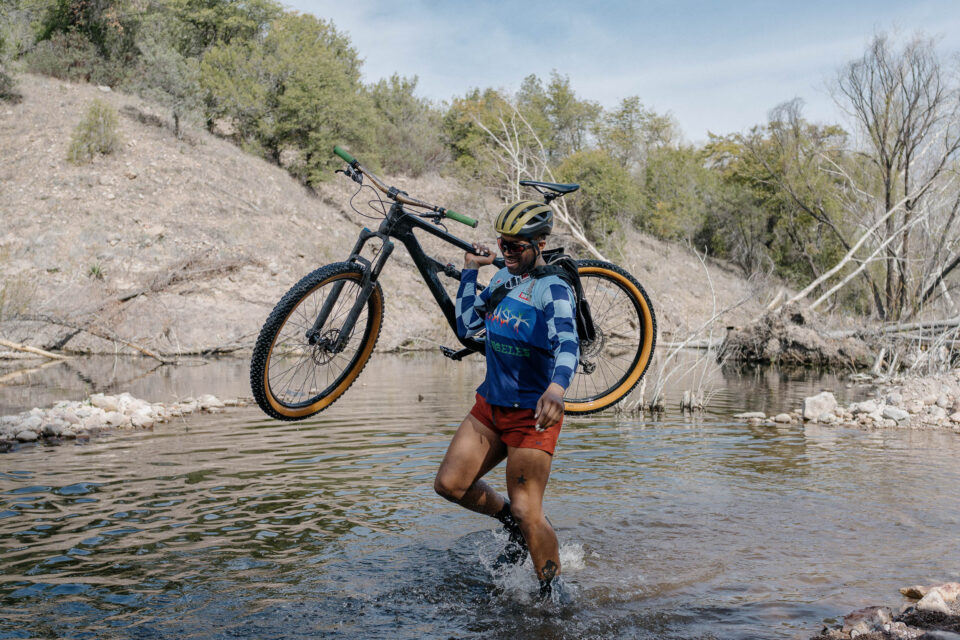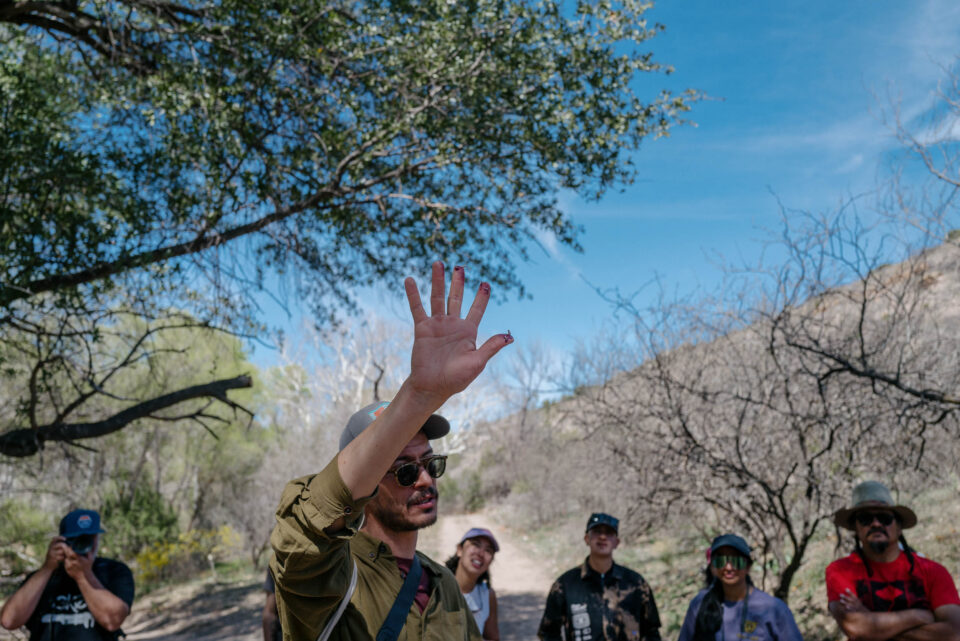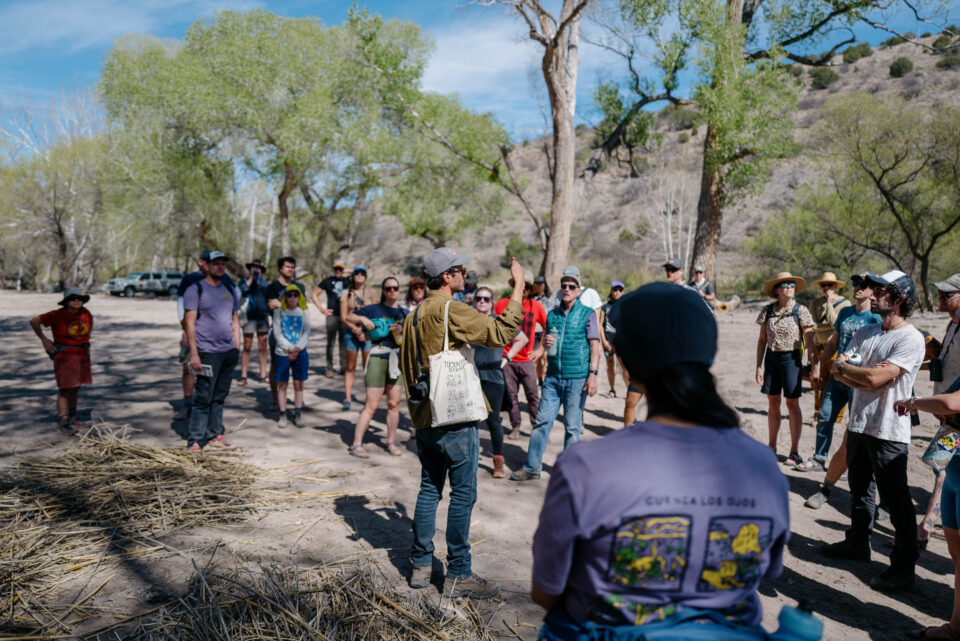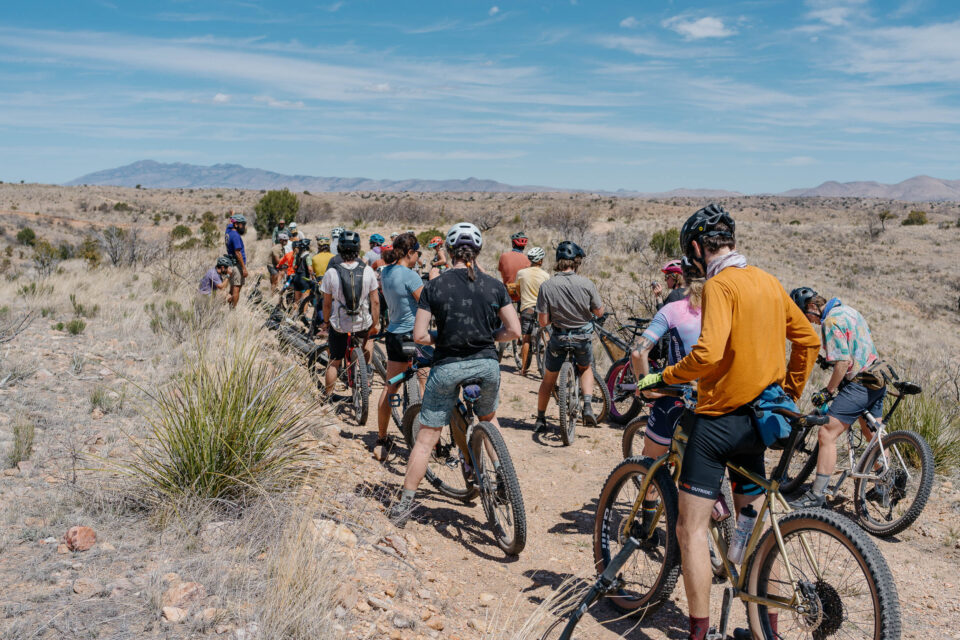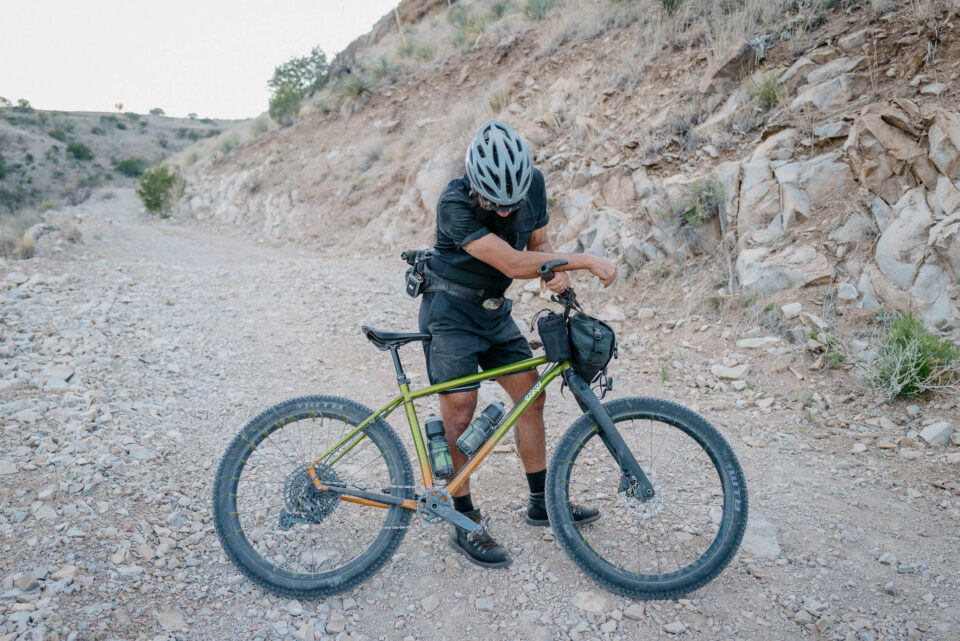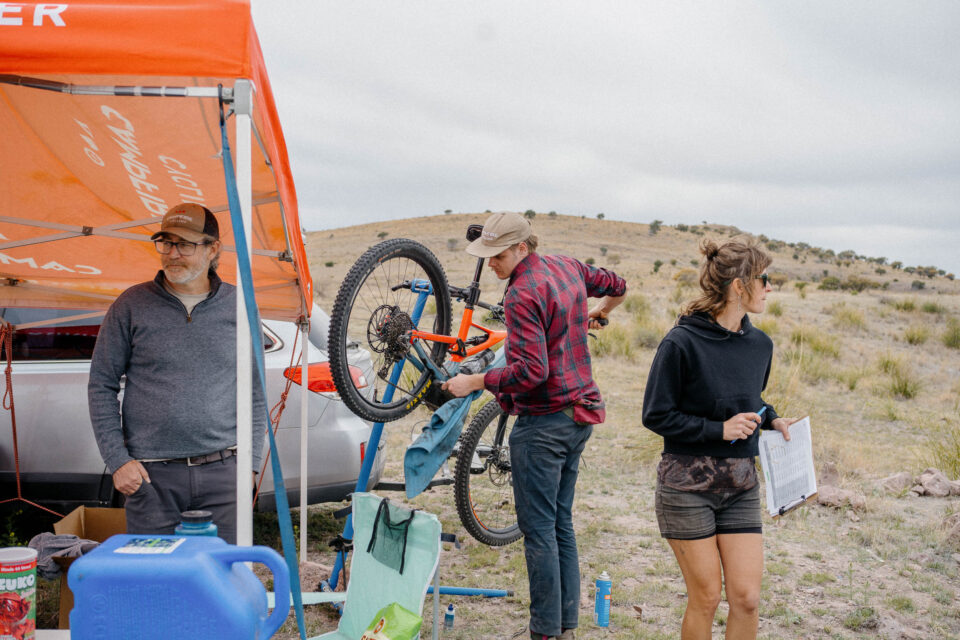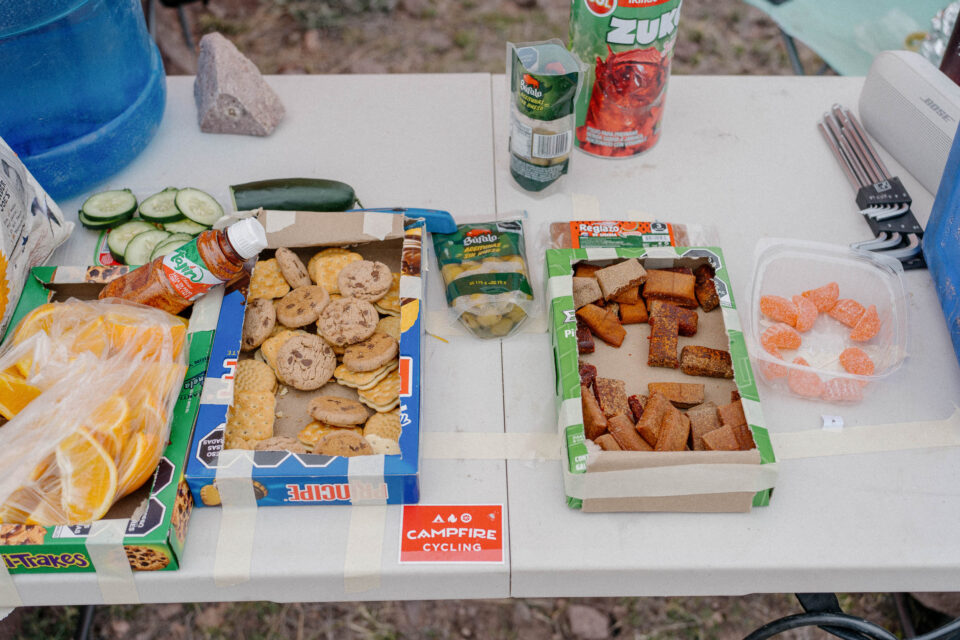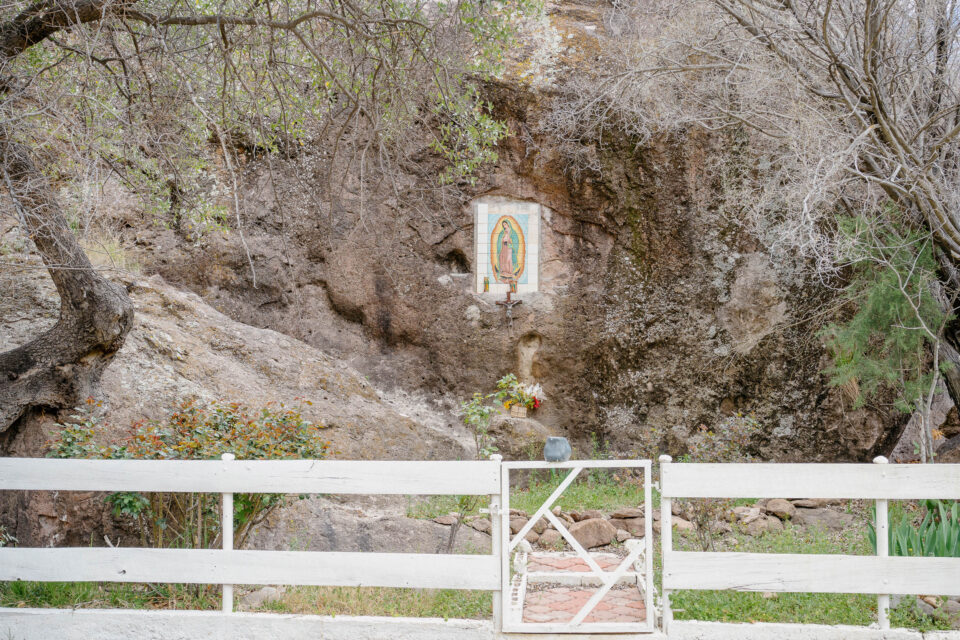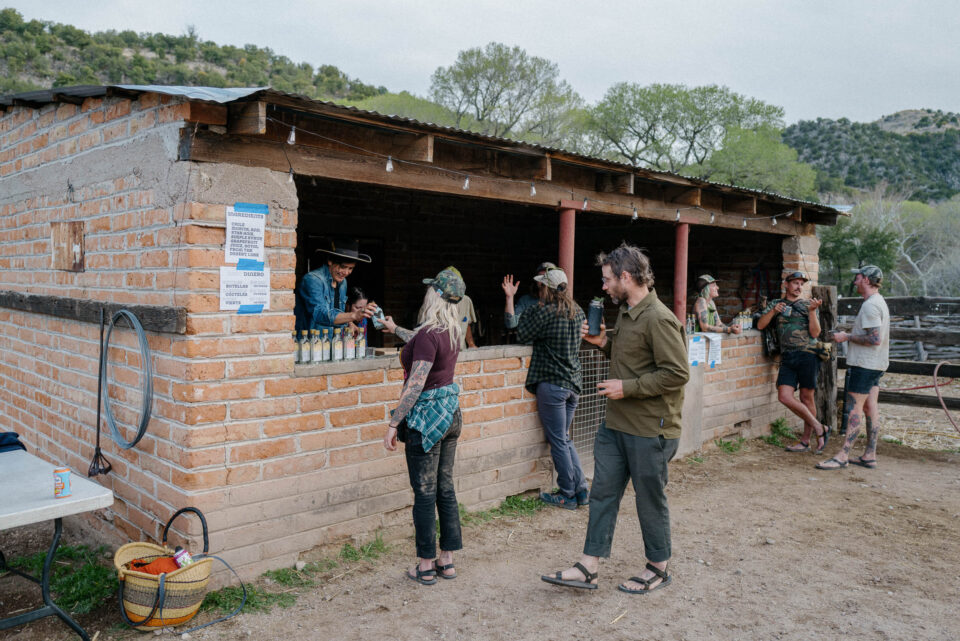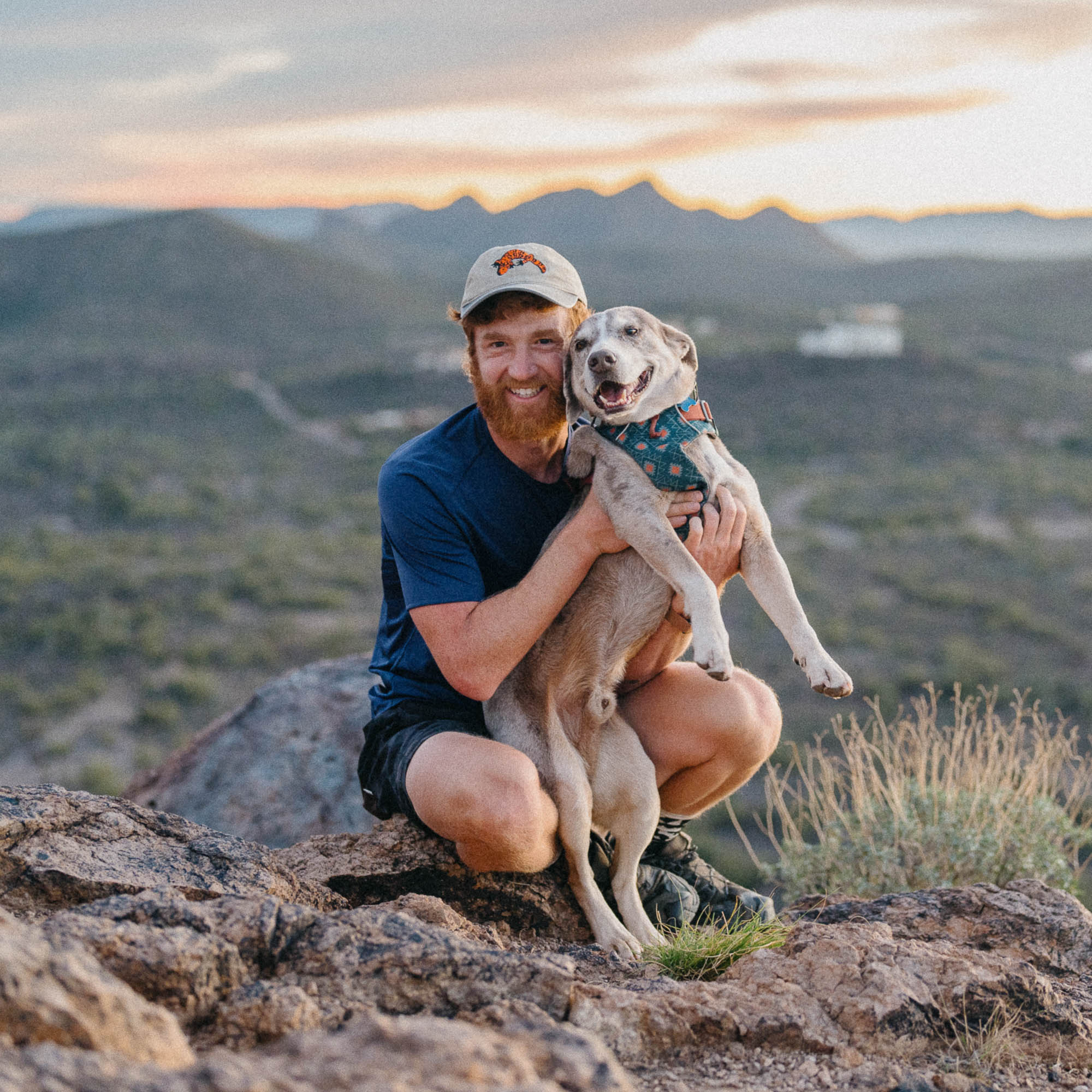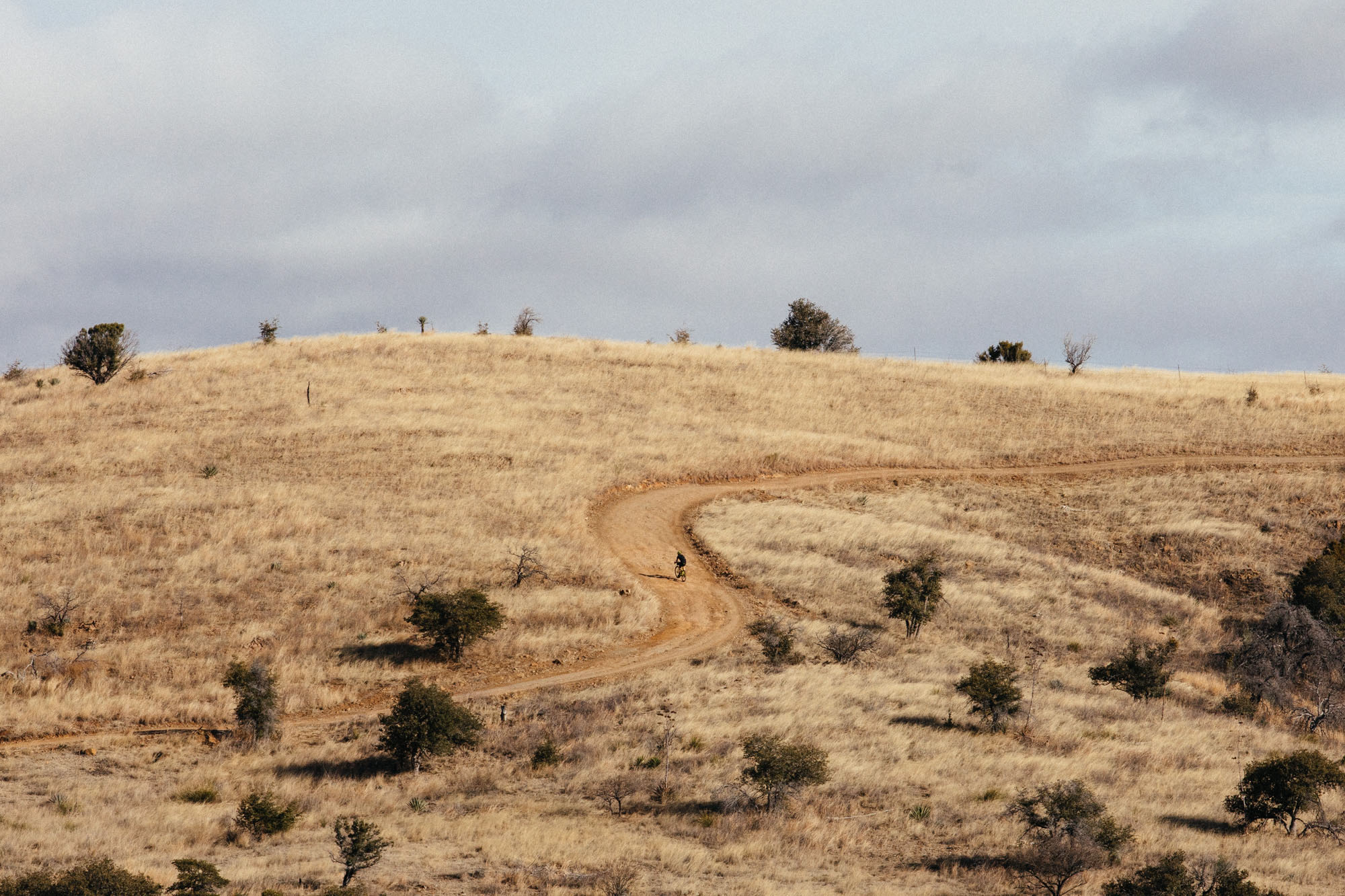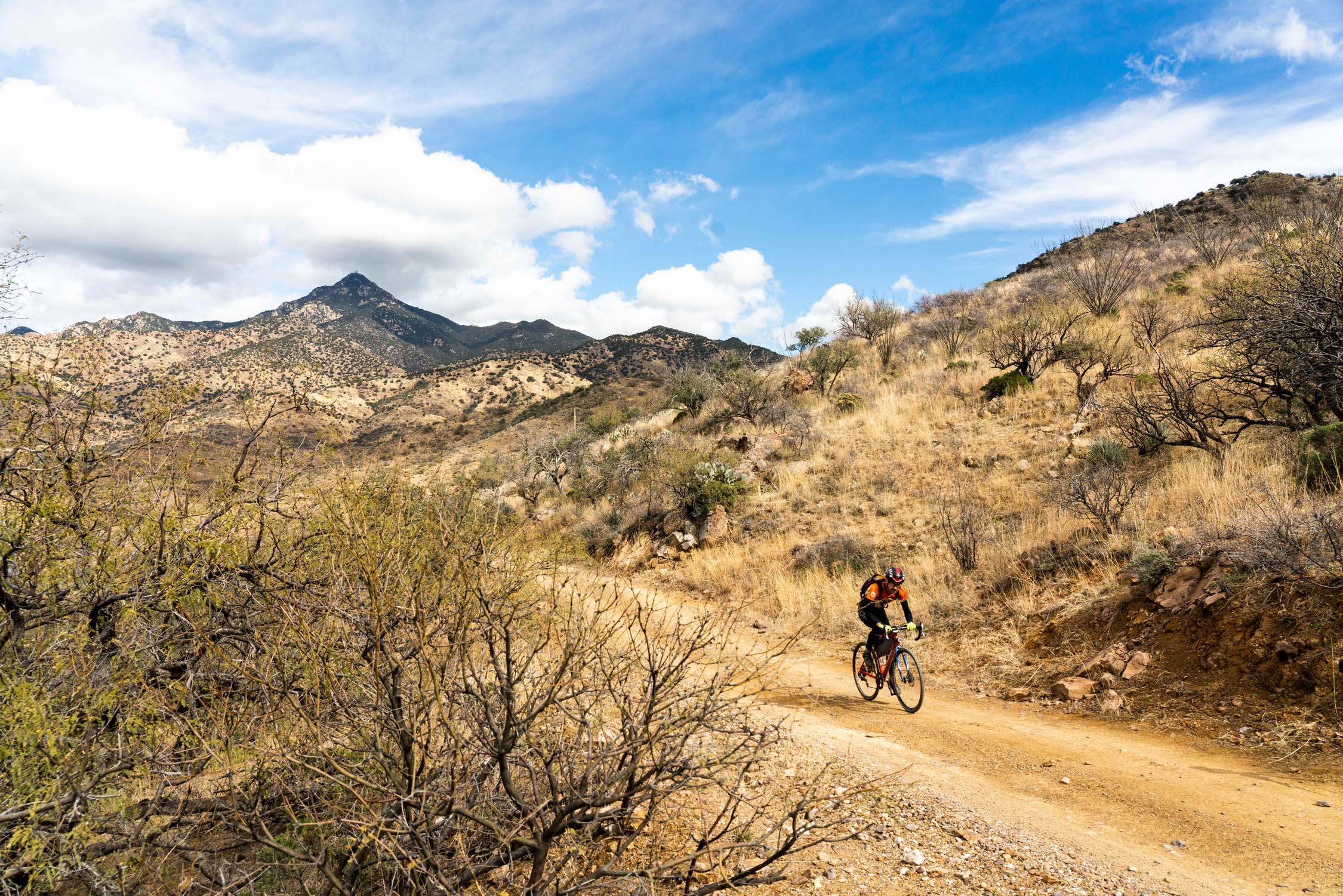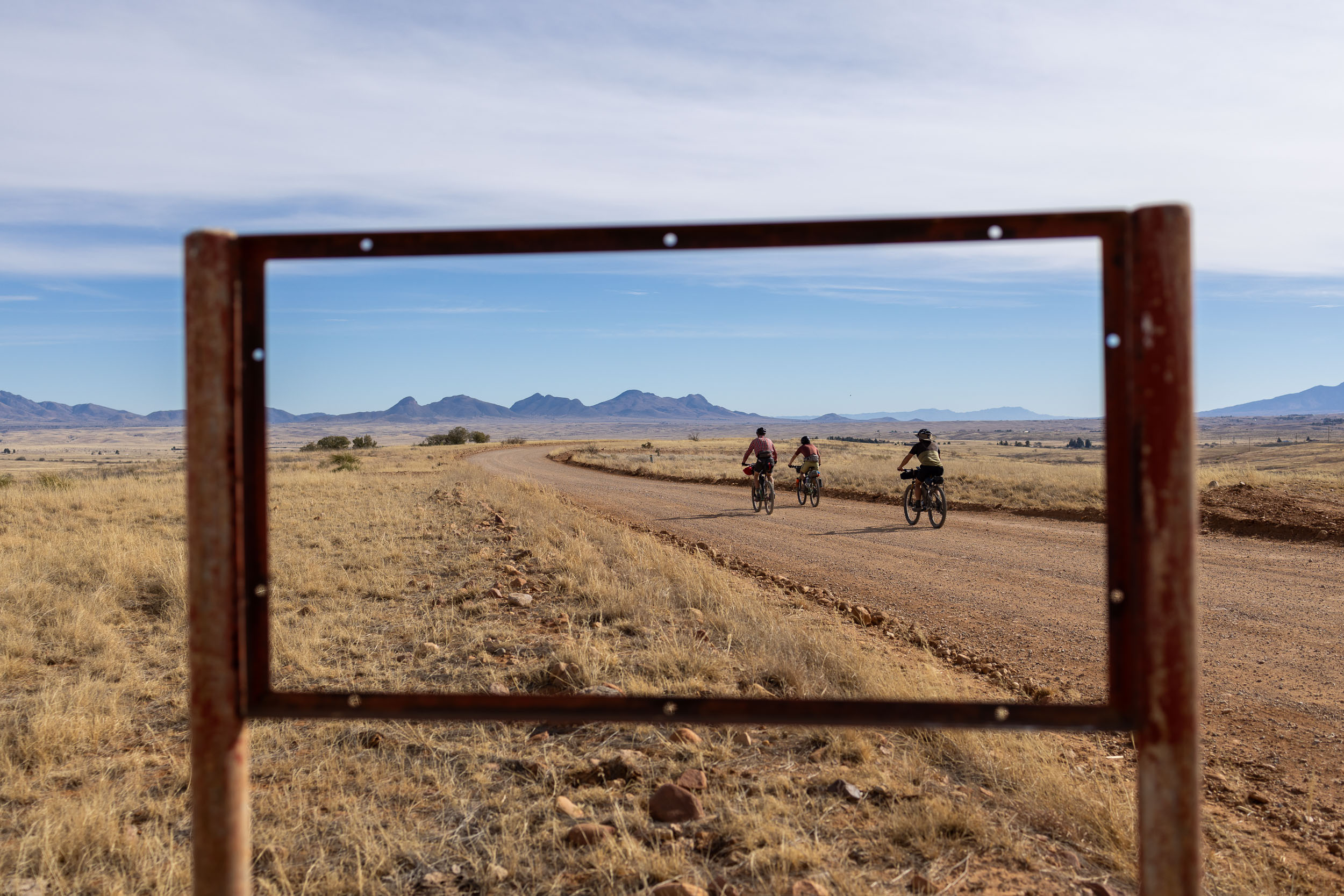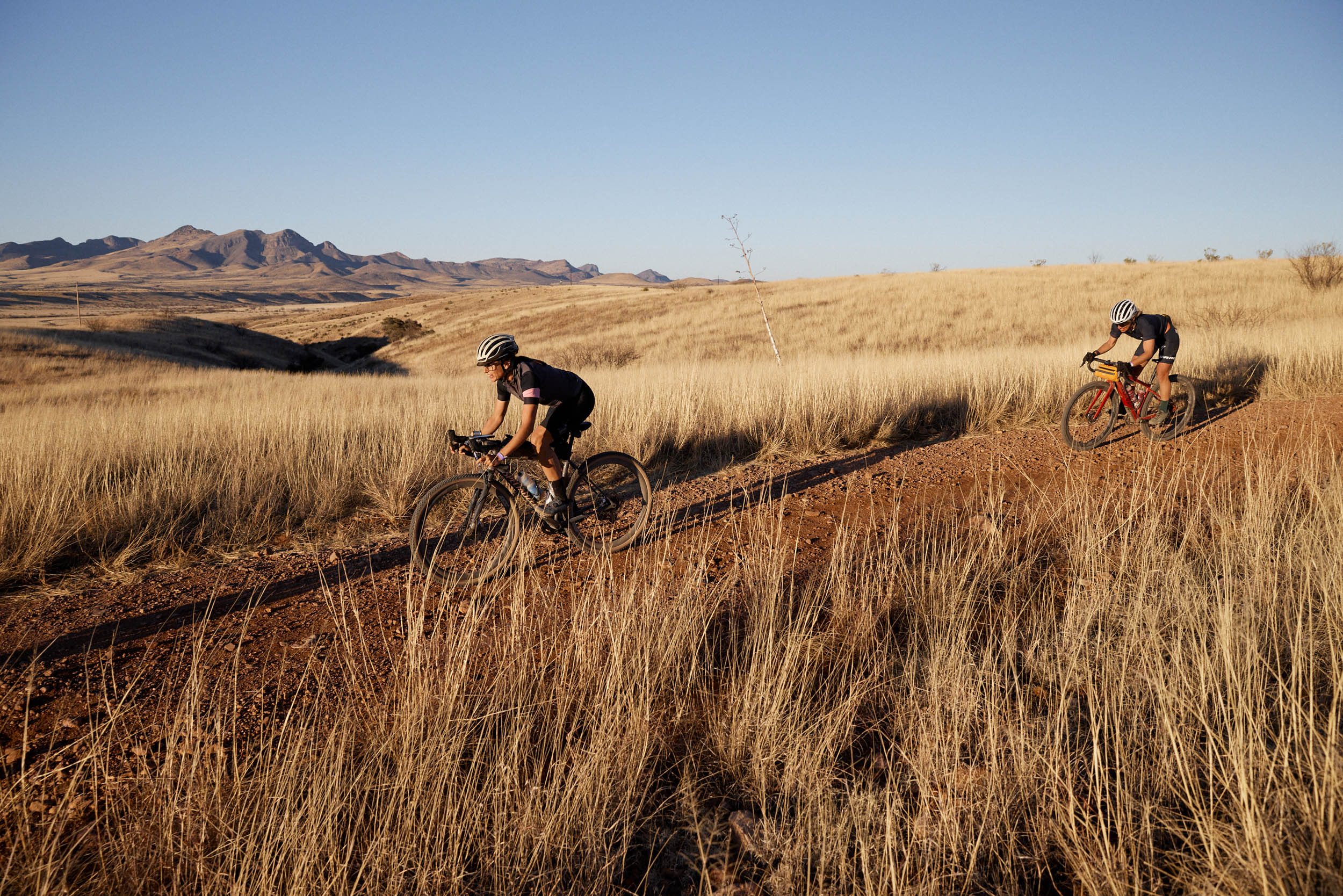Ruta del Jefe 2024: Connecting People, Places, and Ecosystems
Share This
The Ruta del Jefe gathering promotes the rich culture and biodiversity in the US/Mexico borderlands, showcasing its Indigenous communities and highlighting the border wall’s effects on animal and human migration. John Montesi attended this year’s event at the Cuenca Los Ojos protected area in the Sky Islands of Sonora, Mexico, and he wrote this poignant piece that weaves an ecological perspective into a recap of his time riding through the staggeringly beautiful landscape…
Words and photos by John Montesi
The jaguar is a totemic figure for Ruta del Jefe. When Sarah Swallow founded the event, she named it after El Jefe, the first jaguar spotted in the United States since the confirmed 2009 death of the previously lone male jaguar, Macho B. El Jefe roamed the Whetstone and Santa Rita Mountains in Southern Arizona from 2011 to 2015, with various game cameras and wildlife officials occasionally sighting him in the area.
The pre-event emails make it clear Ruta del Jefe is not an ordinary bike event. There are fundraising goals and instructions about what type of vehicle you will need to make it into the ranch where we will camp. Passports required, carpooling encouraged, enough camping gear to be self-sufficient and leave no trace over four full days deep in a remote section of the foothills of the Sierra Madre Mountains in Sonora, Mexico.
The mix of vague and specific that permeates the event emails feels palpable as we head south out of Tucson, Arizona, toward the Mexican border. The stereotypical Sonoran Desert landscape slowly yields to a higher-elevation grassland, cacti fading and replaced by knee-high silvery grasses and resolute mesquite trees. We crest a few hills after rolling through the town of Sierra Vista, Arizona, and are greeted with the visually arresting sight of the border wall: 30-foot-tall steel slats, rusting in the sun and monsoons, slicing the landscape in half with a subtle violence.

The U.S. Customs and Border Patrol Agents hassle us and reach their arms into our duffel bags, an accusatory tone and trick questions lobbed our way for wanting to leave the States for Mexico. No amount of camping gear or bikes on the back of a Subaru makes the interaction any more straightforward. Finally, they wave us forward. In Mexico, the agents ask us where we are going and how much our bikes cost. My insurance app is slow to load on the border region cell service that leaps between AT&T and TelCel so often that it hardly seems to work at all. I dig deep into my Spanglish vocabulary to explain that the ésticker on my car is the registration in my home state. They shrug and ask how many kilometros we plan to ride. The app never loads, and they never reach a consensus about whether the sticker suffices. Then we are free to go and told to disfruta nuestro tiempo en México.
As we head east along the border wall, the landscape heaves and rolls. The highway imitates it, threatening to send my car airborne as we shuffle along, guessing what the speed limit may be at any given time. This region is remarkably mountainous, though the contours are flattened out in the midday sun. There is snow on the tallest peaks, barely discernible through the haze in the air.
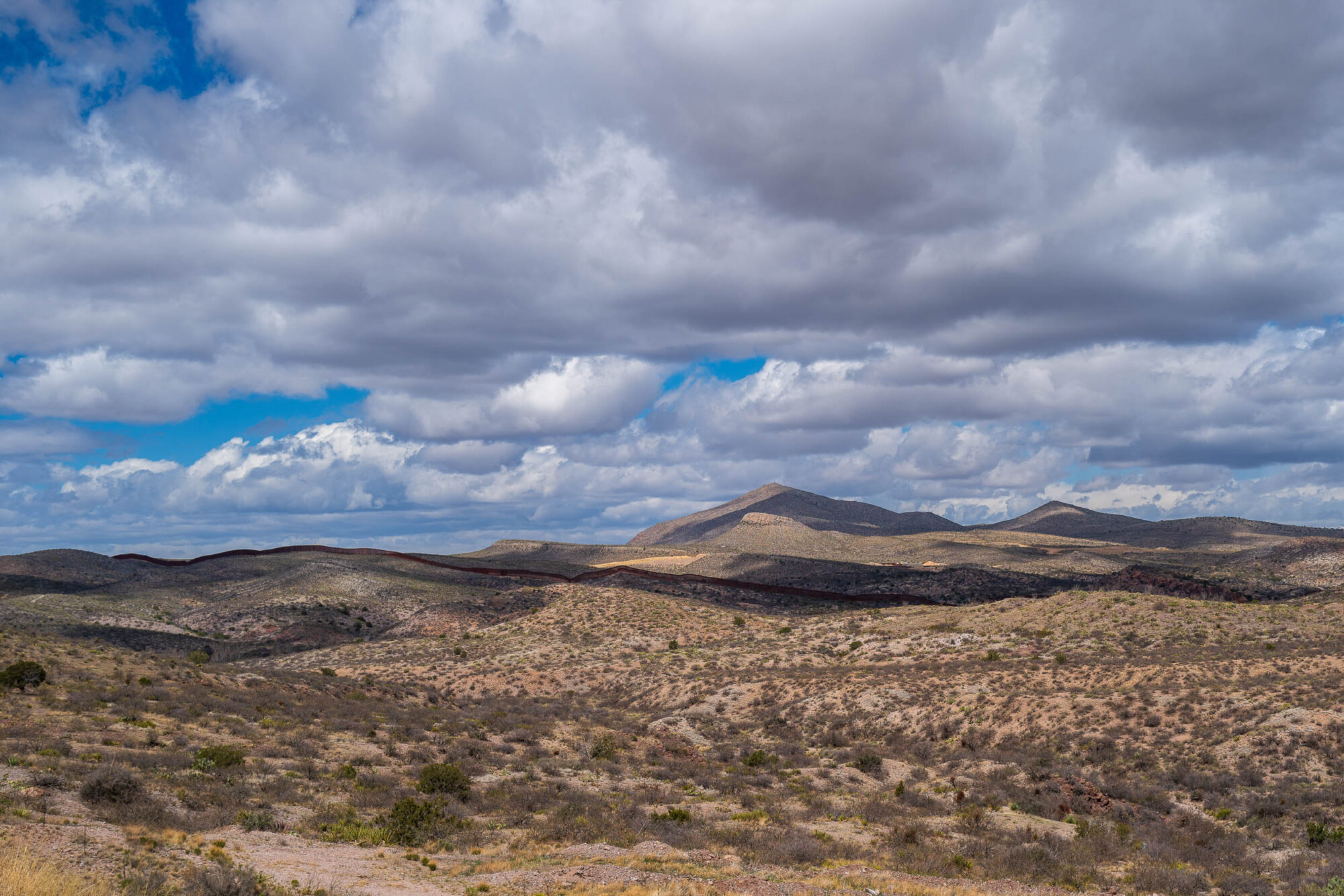
I say to my copilot, Nick, “For some reason, people don’t see the beauty in these landscapes the way they do the purple peaks and blue oceans that Instagram has taught us are pretty.”
“That’s true. I guess you just have to pay more attention to this place to really get all of its layers, huh?”
As we bounce down the narrow two-lane highway that parallels the international border through this rugged landscape, Nick remarks again and again, “There are probably jaguars somewhere up there.”
Shortly before Patagonia, Arizona, became known as a gravel cycling destination, it was a secluded haven for birdwatchers and elusive big cats. When Swallow hosted the inaugural Ruta del Jefe in 2019, she brought attention to the presence of jaguars in the region and the looming border wall construction just south of the Appleton-Whittell Research Ranch outside of Patagonia. At that time, El Jefe had not been seen in four years. His name was elevated to mythical status as wildlife enthusiasts wondered whether he had retreated to the far less camera-laden hills of Mexico or had been killed trying to cross a highway.
The relationship between El Jefe and Ruta del Jefe is profound. In a city where the university mascot is the Wildcat, few people realize that mountain lions still prowl the surrounding hills. The jaguar is an even more rare and elusive big cat species. And in a region where a physical wall now separates the people and animals that have followed good weather, water sources, and food across an expansive ecosystem for centuries, the fact that we celebrate a single individual of a fleeting species is a stark reminder of the fine line between hope and devastation.
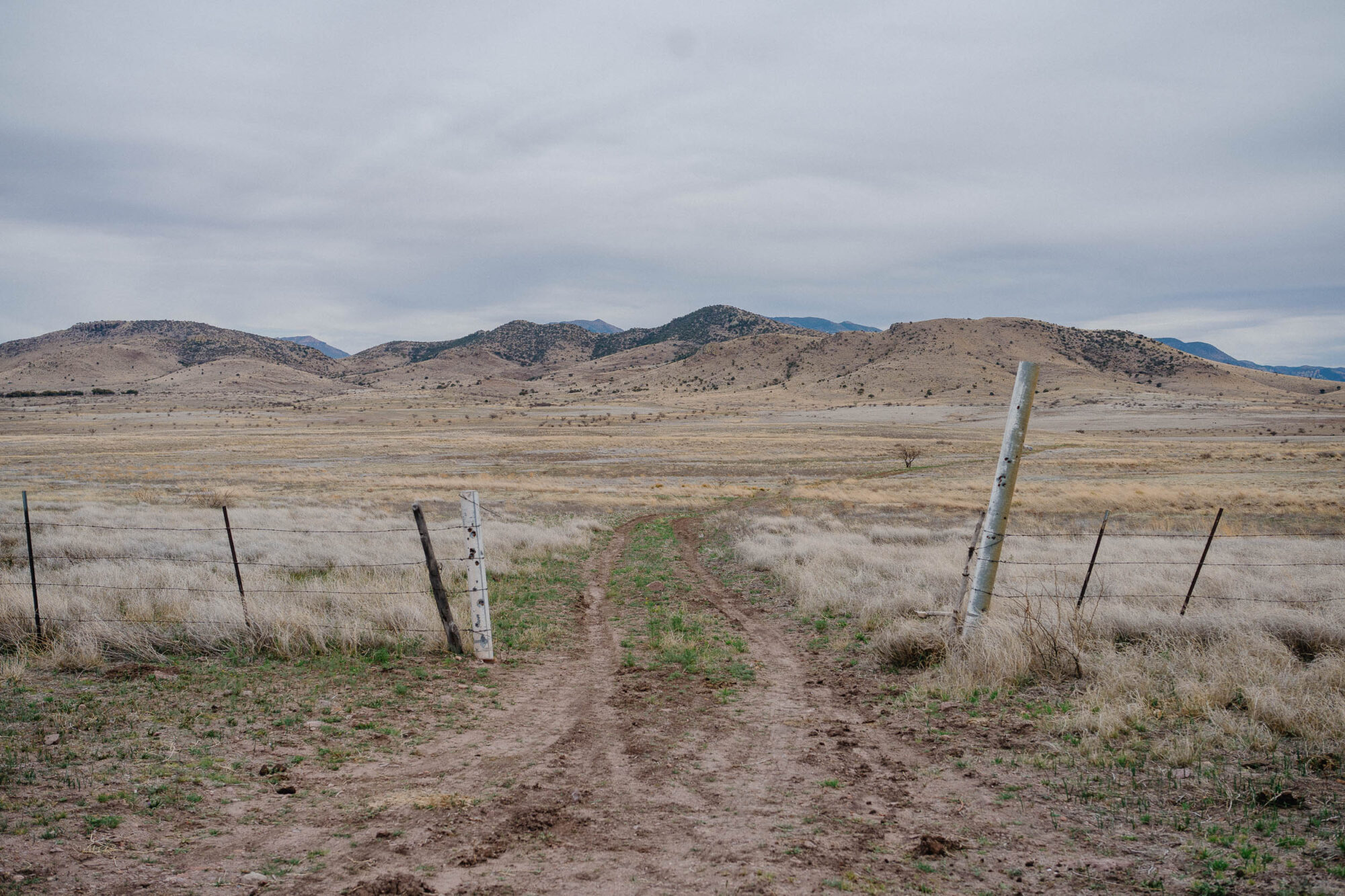
On the desert floor, saguaros stand resolutely while Gila woodpeckers squawk and flit between them. High in the mountains, alligator junipers play host to mountain jays, streams trickle downhill, coatimundi amble through rocks in packs, and somewhere, a jaguar crouches in a tree, watching it all go by.
We pull into Cuenca Los Ojos conservation ranch and are waved into the nondescript gate by a ranchhand and a friendly volunteer, where we are signed in and given instructions for the eight-mile trek down a chunky doubletrack road. This drive sets the tone for all of the weekend’s riding: deep water crossings, huge bumps, and rocky stretches that highlight the region’s volcanic roots. The pristine quality of Cuenca Los Ojos is apparent at every moment of the drive. As a resident of the greater Sky Islands region, I know these ecosystems well. And yet, very few of them still have year-round flowing water, which means the quantity and size of the cottonwoods and sycamores in the canyons here is mind-boggling. The flowers and butterflies dance in the breeze, blissfully unaware that this is one of the few places left that is like this.
After quickly setting up camp between forks of a crystalline stream, we gear up for the welcome ride. Our first sample of the terrain includes no fewer than a dozen creek crossings, one of them thigh-deep. Beavers have dammed this part of the creek, a boon for the ecosystem and a bit of trouble for the few dozen bottom brackets that pass this way today. We pause at high points to admire the unreal scenery and the unique way this landscape doesn’t reveal the true intensity of its contours until you move through it. The resident and visiting naturalists pedal with us, sharing details about where jaguars, coatimundi, black bears, and mountain lions have been spotted amid the wrinkles and shadows below us.
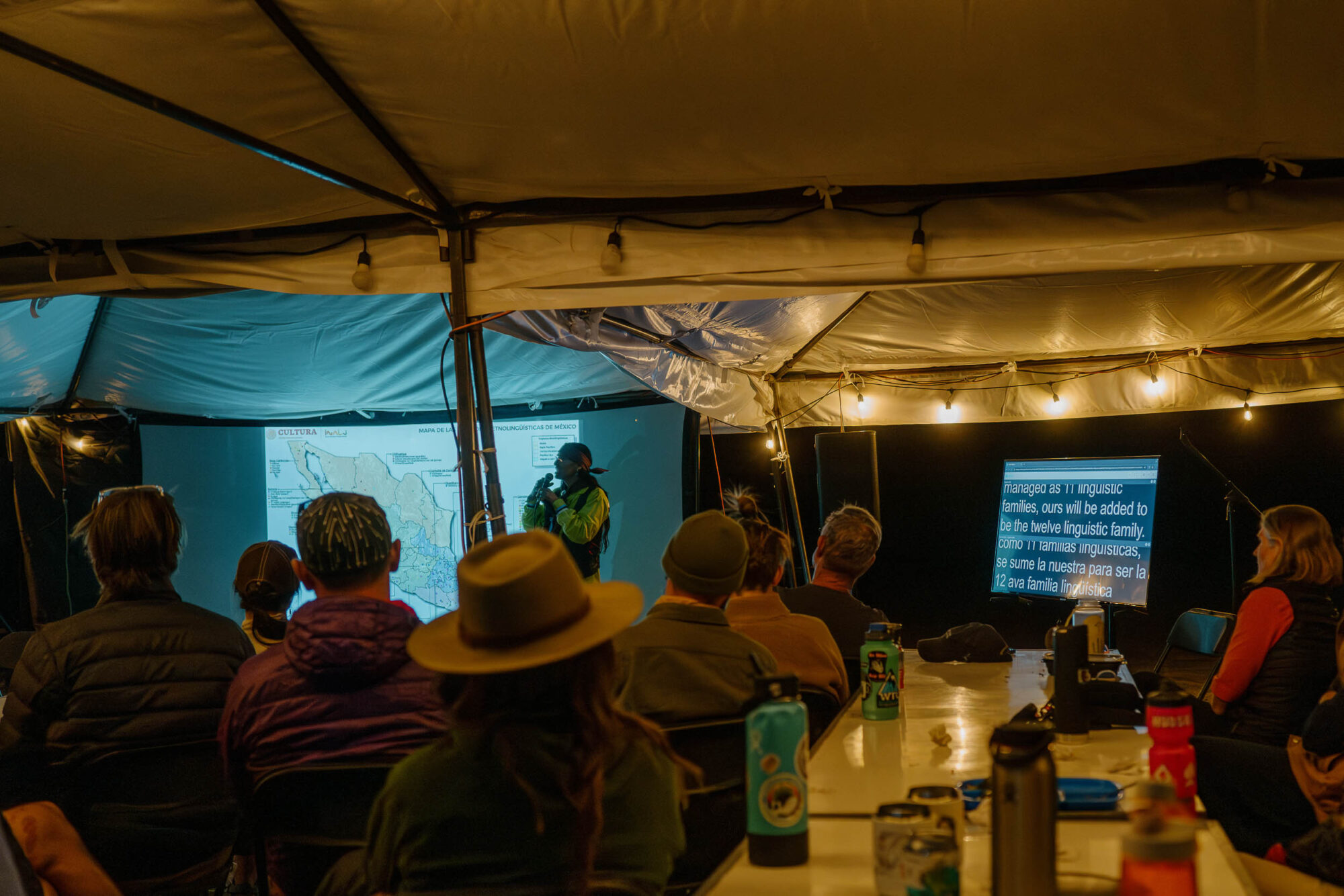
We return to camp and change before lining up for homemade chimichangas and the evening programming, which includes two short films that vividly illustrate the complexities of the borderlands region. First, we watch American Scar, a short film about the Border Wall’s impact on all living things in this region. Footage of a mountain lion caterwauling as it reaches the steel slats and realizes it cannot follow its instincts tugs at the heartstrings. A video of a deer twitching its ears as it tries to solve the problem of how to follow its nose toward greener pastures is sobering.
The next clip is a dehydrated deer lying dead, leaning against the wall. The video highlights the folly of the wall as a form of national security and the shocking permanent impact of blasting mountains with dynamite to make space for a political stunt. People still find a way, while animals lack power saws and ladders to make their natural seasonal treks and slowly suffer on whichever side they are stuck on, their instincts no longer enough to navigate their surroundings. I catch eyes with a new friend as we both dab tears with salsa-covered napkins.
The second film is Espera, Esperanza (Waiting, Hoping), a film about the asylum situation in border towns like the one we drove through earlier in the day. The parallels between humans and animals are striking: all of us wailing when we cannot find safe places to survive, all of us following our instincts toward greener pastures and the natural evolution of the planet. I recognize the cries of loving family members just as clearly as I do the wails of javelina and mountain lions and the silent despair of deer. The attendees are silent and fully focused on the film, and I find myself soaking up this bittersweet moment. There are well over 100 people deep in a wrinkle on the map, transfixed on the projector screen, sincerely committed to a safe and inclusive environment and to learning as much as possible throughout the weekend.
Daniel Diaz and Karla Robles, our Hermosillo-based friends who orchestrated so many of the logistics south of the border and bring a rowdy vaquero yin to Swallow’s mellow and curious yang, emcee the films, alternating fluidly between English and Spanish. Their stoke is palpable, and their matching cowboy hats are adorable. Friendly, proud, hopeful, and fun, they are the perfect representatives of Sonora.
Friday morning begins with sunrise yoga and birdwatching walks in English and Spanish. Chilaquiles are served for breakfast, and then comes the second round of nature walks and workshops. Mid-morning, we roll out for a longer ride in the opposite direction of yesterday’s loop—there are fewer creek crossings and more hills to climb. The scenery is enveloping, and its subtleties only reveal themselves to those who move slowly through it. Each wrinkle in the hills reveals a new riparian zone, a new shady seasonal arroyo where wildlife travels just out of sight.
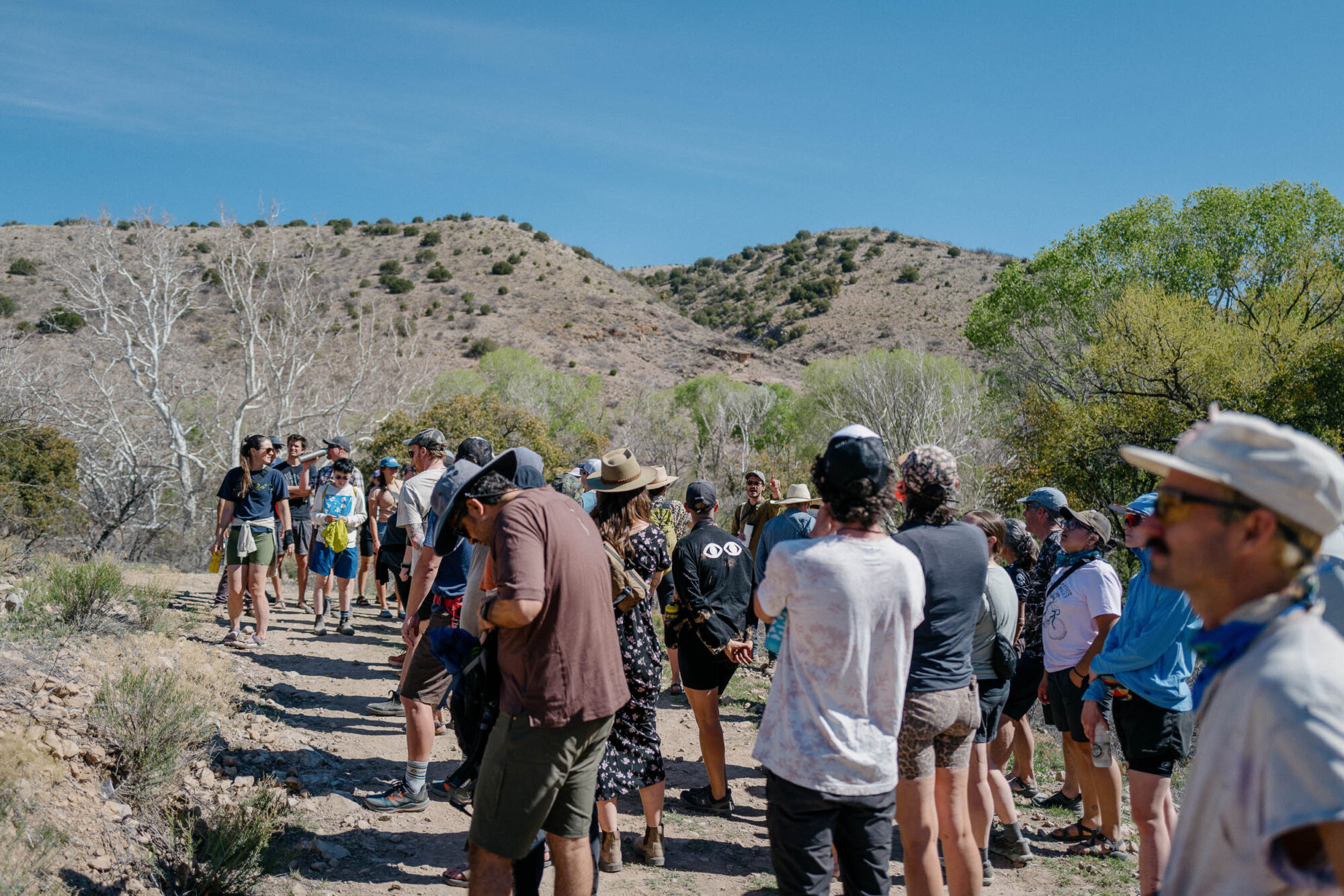
At a high point, biologist and instrumental event orchestrator Dr. Rodrigo Sierra Corona gathers the group to explain what we are looking at: a convergence of the Sierra Madre mountains reaching up toward 10,000 feet above sea level, foothills fanning off in every direction, and Sky Islands to the north of us in New Mexico, with low country corridors that mammals travel to link these mountain paradises together.
We descend a rollicking old jeep road until the hills take a respite and the high-elevation grasses stretch out across the valley—named Animas Valley for the spirits that are said to move through it. In the midday sun, the spirits lay low, and their voices are drowned out by semi-trucks lumbering down Highway 2, the first major scar on this landscape. Just a few hundred yards to its north, the border wall reminds us that it can get worse than high-speed concrete arteries.
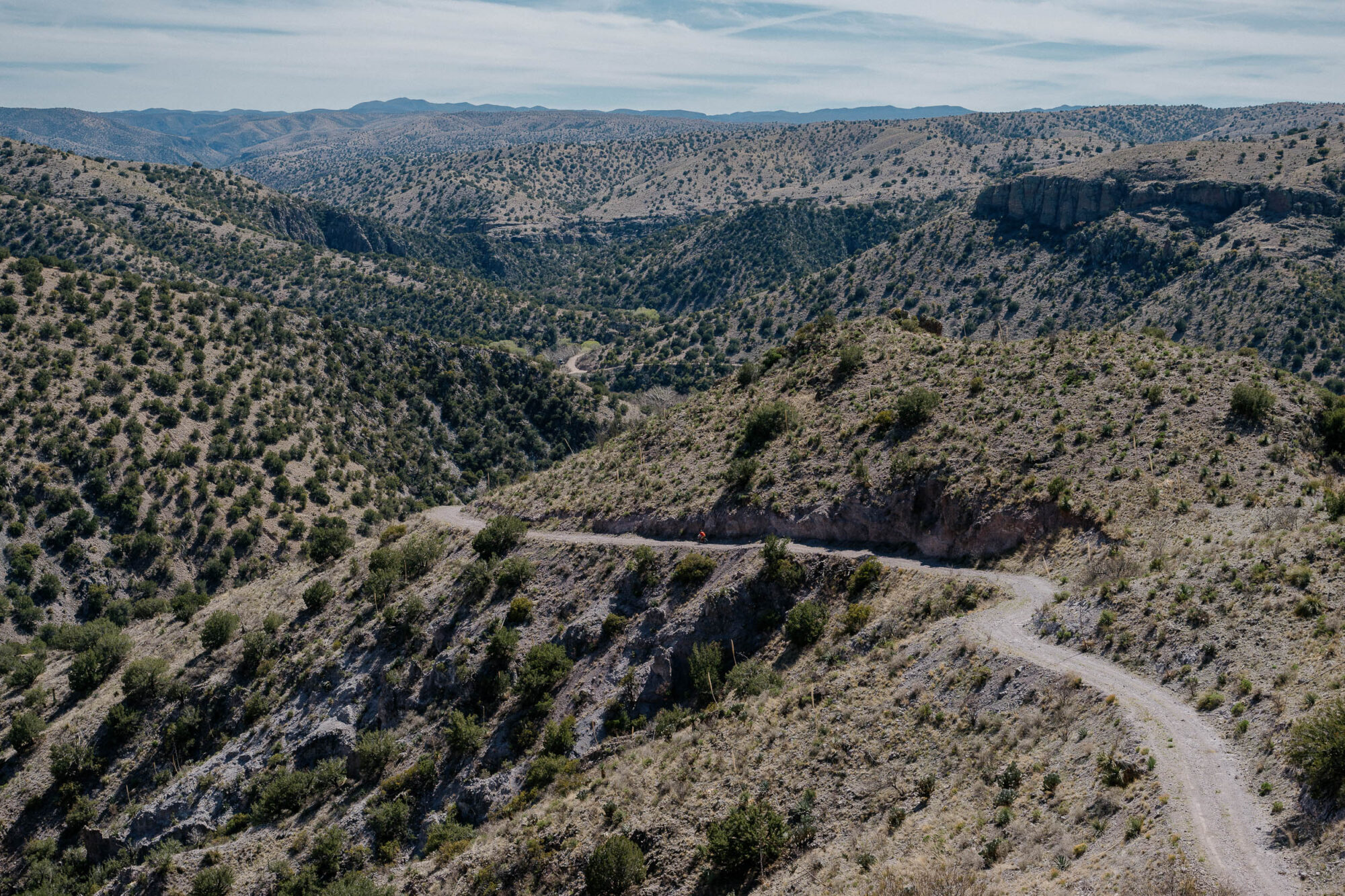
After pedaling through the valley, we climb some more before reaching a shockingly steep and sinewy descent back toward the heart of the ranch. Camp lies 1,000 feet below us, with only a couple of miles of road to get us there.
The afternoon brings workshops on bean-to-bar chocolate with an avid mountain biker and cacao expert, Julio Salazar, from Chiapas. There are talks from the beneficiaries of Ruta’s donation program: Juan Luis Longoria from the N’dee/N’Nee/Ndé Nation, the team from Frontera de Cristo, and Diego Valles from Por La Defensa del Río Casas Grandes, who help us understand the challenges they face, where our donated funds are going, and how people maintain persistent hope as they persist steadfastly in a changing world.
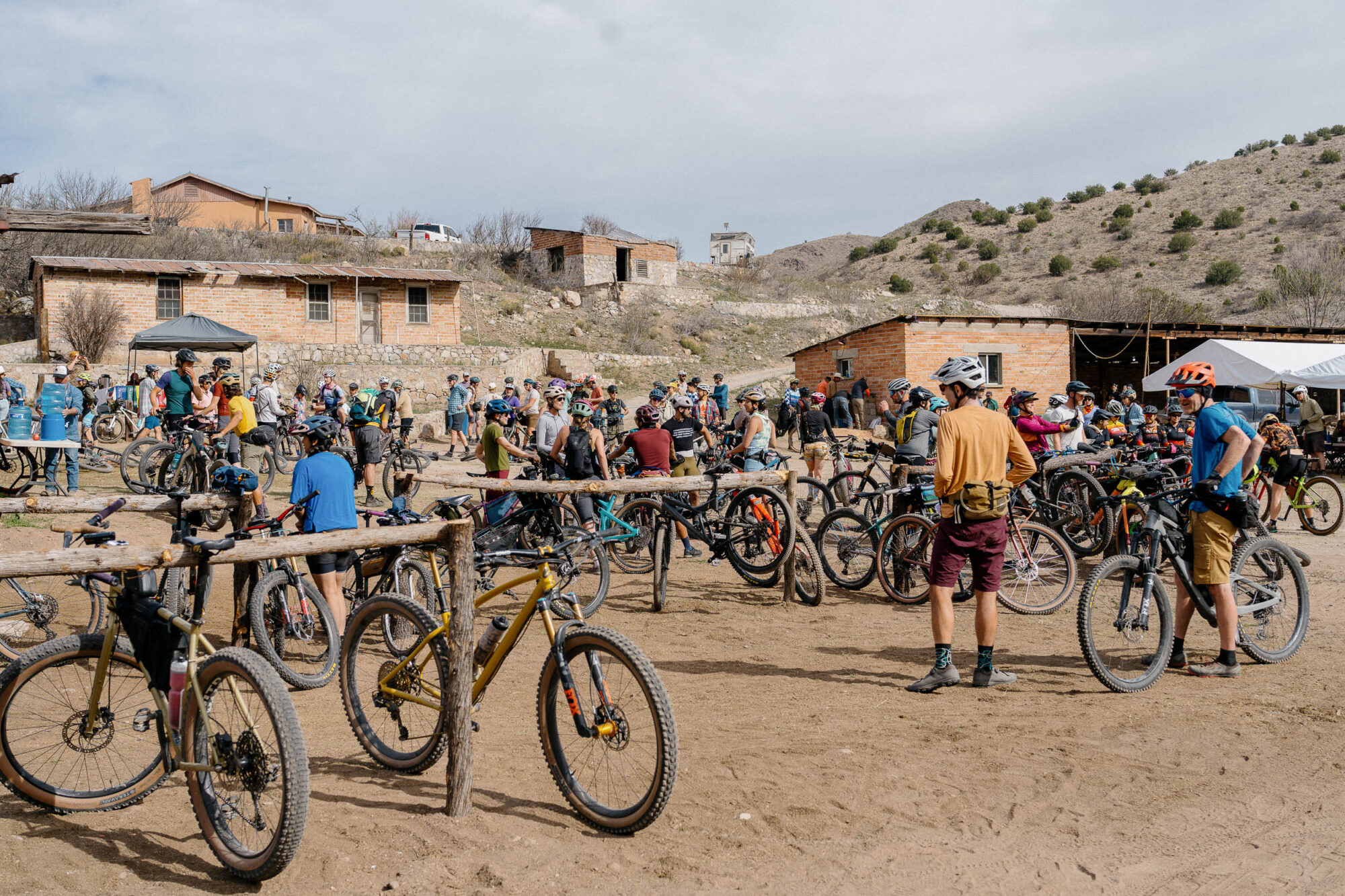
Rodrigo Sierra Corona shares insights from his time living at and studying Cuenca Los Ojos and the vision he has as the executive director of Borderlands Restoration Network. His enthusiasm, intelligence, and humor are on full display as we laugh and cry our way through the realities of a natural world that knows no borders and a manmade one that does. “When you hear about this region,” he notes, “the last thing you hear about is hope, is beauty, is having fun. I know that when most of you said, ‘I’m going to the borderlands in Mexico,’ your family and friends said, ‘What the f**k are you doing!?’”

He continues, “But you knew there was something worth visiting, things worth experiencing.” We all applaud, nod, smile, tear up.
The night finishes with an exuberant presentation by Ganesh Marin Mendez, a Ph.D. candidate studying black bears at Cuenca Los Ojos, National Geographic Explorer, and founder of The Bear Project. His slide show starts with “September” by Earth, Wind, and Fire blasting from the speakers as we watch breathtaking game camera footage of skunks, black bears, deer, foxes, and, finally, jaguars. The gasp in the crowd is audible, even after two hours of non-stop educational content. He shares why he is studying black bears—in large part, because there are more of them than jaguars, which allows for far better data on how predatory mammals are adapting to changes in the ecosystem—and tells tales of jaguars walking mere meters away from where we are currently sitting. Ganesh preaches, “We are all mammals. Sometimes, we are required to move. We empathize with those who are moving to find love, to find resources, to find a home.”
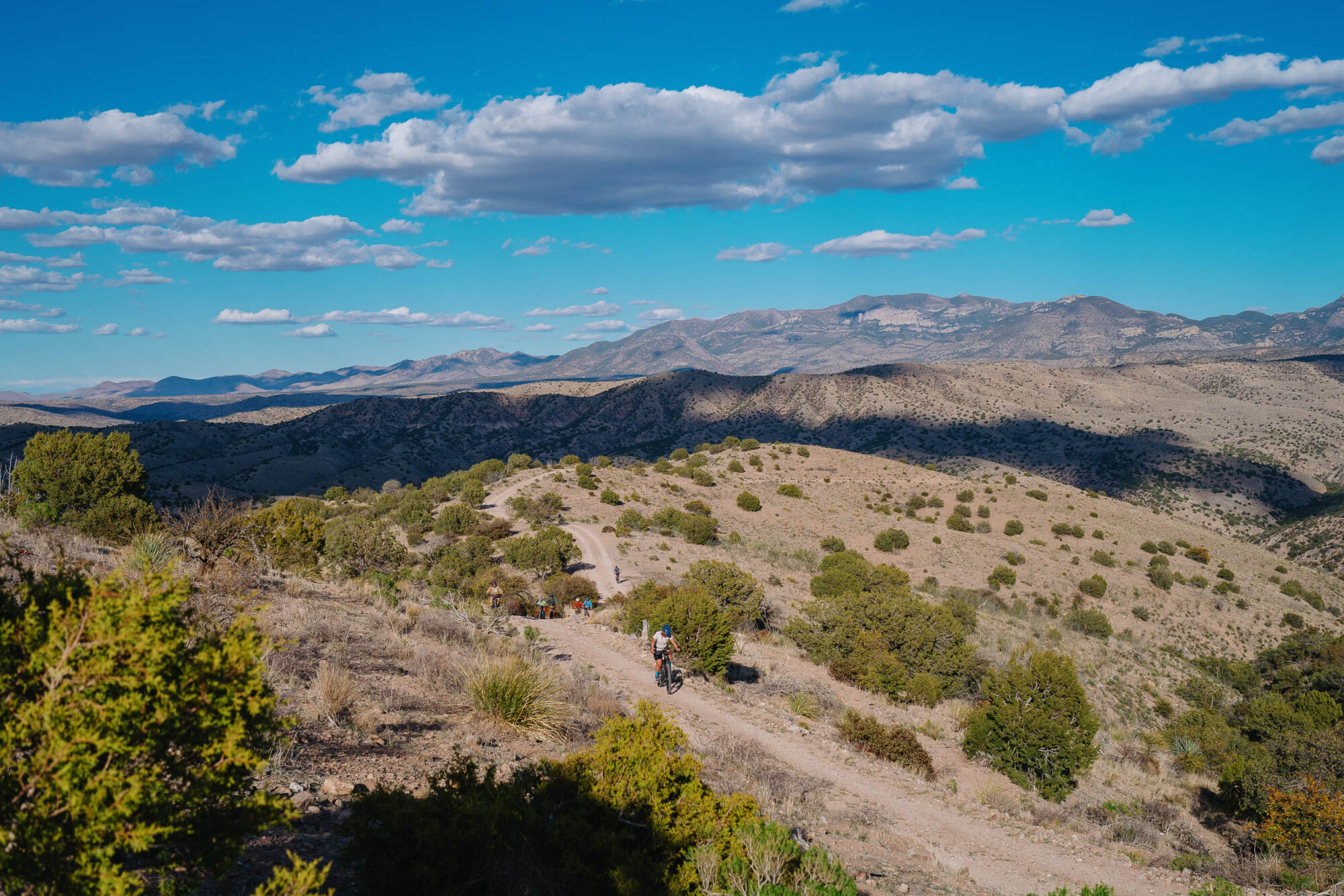
For a few minutes, it feels like this is the center of the universe, echoing a comment made by Dr. Sierra Corona on our ride earlier that day. Cuenca Los Ojos is a place everyone should care about—these issues are things everyone would rally behind if only they knew. The unbridled enthusiasm and tender care each and every presenter brings to the makeshift stage is contagious, and the landscape swallows us whole with equal parts welcoming warmth and unfeeling brutality. From creating a council of Indigenous peoples to preserve and expand the many languages and traditions across Mexico to fighting corrupt and unnecessary dam construction, people here are passionately doing things that matter. Bikes are simply a vehicle for uniting us at this particular point in time, but they are far from the focal point of the weekend. Perhaps moving so closely through the world is the perfect impetus for caring more deeply about it, for finding a purpose beyond even the immense joys of community and solitary exploration.

I sit with Johnny from Team Crust and Juan from the N’dee/N’Nee/Ndé Nation as we discuss jewelry, fashion, why the names we use for things matter so much, and how connective and life-affirming the experience of walking or biking across a landscape is. To my right, some of Juan’s friends from Ciudad Juarez comment on my red beard, a common refrain from curious and friendly folk in Mexico all weekend. This is a safe space to ask questions, to laugh, to cry. We have painted nails and beaded pendants, red hair, and long, dark braids. We are all here to learn.
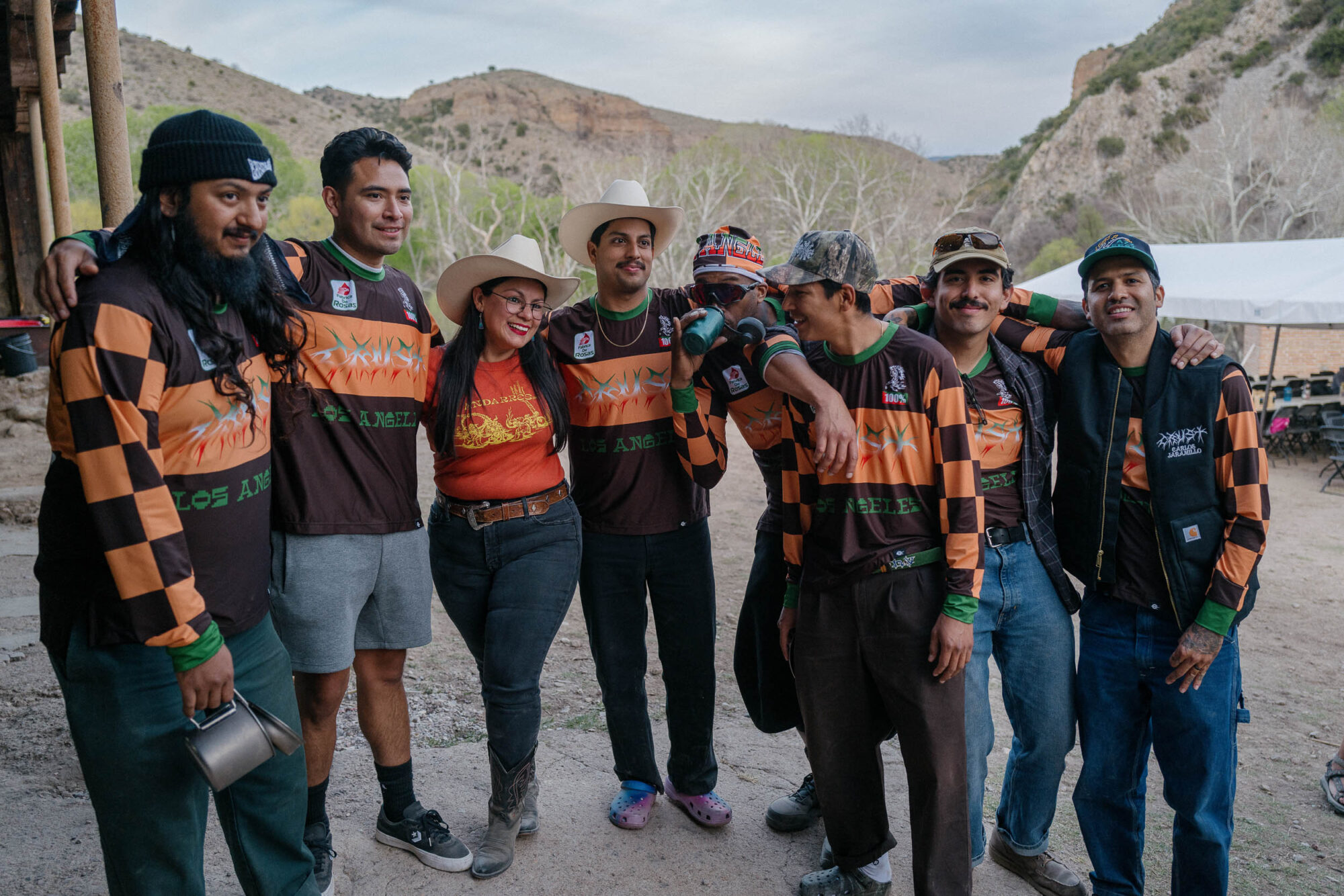
As the night winds down and everyone retreats to their tents, I catch Rodrigo and Diego and talk about the archaeology and free-flowing waterways they alluded to in their talks. We rattle on about pottery from modernity and antiquity until we are shivering, and Diego says it best, “It is time for hugs or time for blankets, but we cannot stay here anymore.” The nights are chilly in Sonora this time of year.
In August 2022—a few months after the last Ruta del Jefe—conservation groups announced that El Jefe had been sighted on game cameras in Sonora, Mexico, starting in November 2021. This triumphant news meant that not only was El Jefe now one of the oldest known wild jaguars, but he was also one of the only modern jaguars known to have successfully crossed Mexico Highway 2 multiple times as he traversed the Sky Islands of the Borderlands region as jaguars have for centuries. His legend grew as scientists and wildlife enthusiasts realized he had survived and avoided detection for seven years. Against all odds, life finds a way.
Saturday morning arrives, and with it, the bigger bike rides. There are three route choices, all of them mixing deep water crossings, burly climbs, and breathtaking views over a mile above sea level. There is a loving, laid-back energy in the morning air as Sarah and Carla announce over the megaphone in English and Spanish that the El Jefe riders will now depart 30 minutes later. Nobody is in a rush. There are no starting line jitters, no loud beats blaring. It is serene, with birds chirping, people chatting about whether they plan to walk or ride the beaver dam crossing, and making sure that there are enough gear redundancies to keep everyone safe and moving all day. I think to myself that more bike events should feel like this. No competitive tunnel vision, no 5 a.m. alarm clock, no stress at all. Time to notice and to savor, to ask questions, to listen.
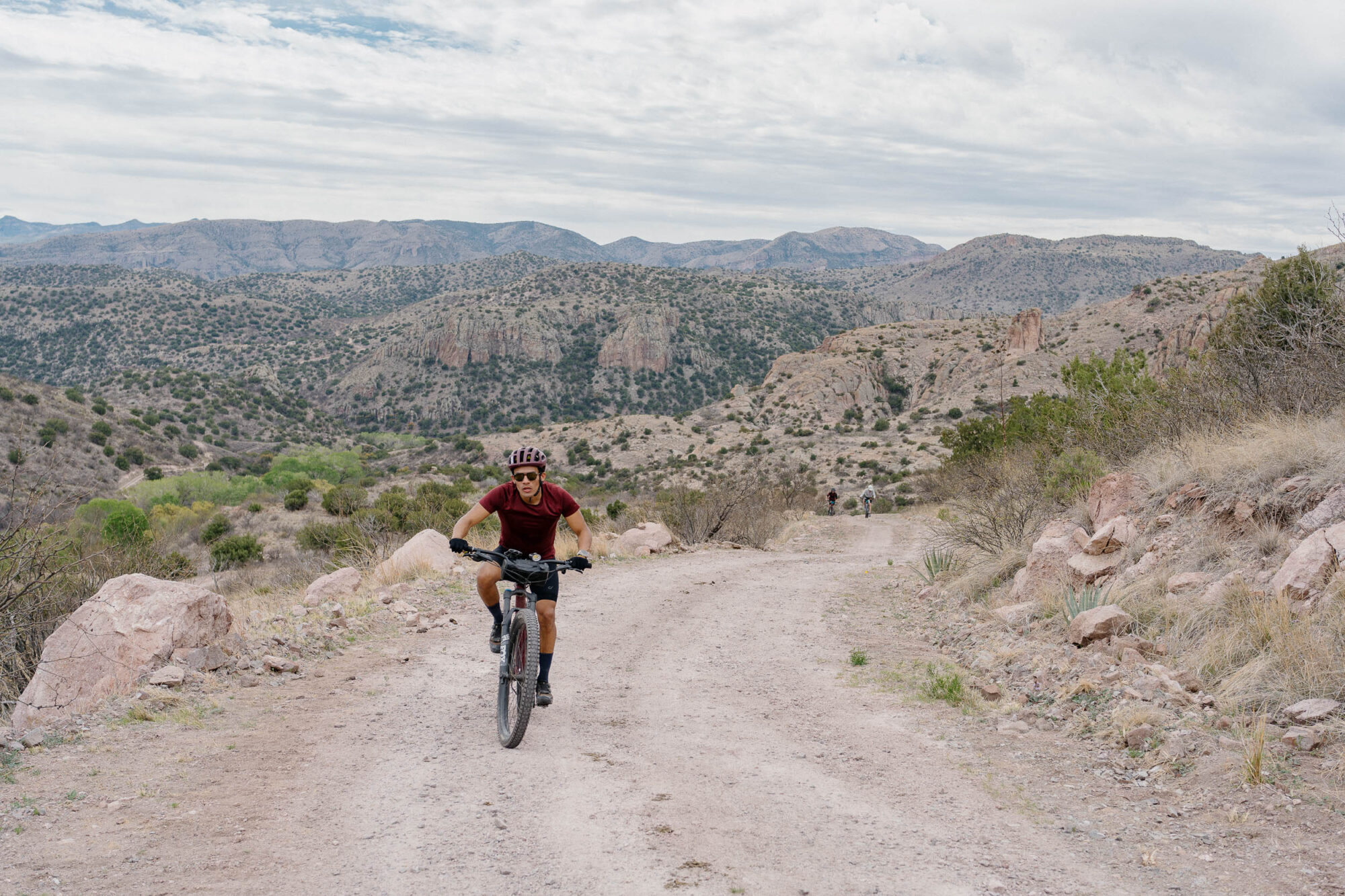
Karla plays with the siren function on the megaphone, the first loud noise all morning. She encourages us to get started, but it’s more of a suggestion than a demand. People slowly filter down the doubletrack road, a team from Frontera de Cristo charges ahead enthusiastically in matching kit, the Crust boys hoot and holler as they splash into the water crossing, and people form casual groups with new and old friends as they settle into the rhythm of the day. It is as social and as solitary as you want it to be.

The miles pass shockingly slowly, which is a gift. Sarah insisted that this ride is far harder than the numbers suggest, and she was right. There is so much to see, so little purpose-built road. We follow the vague suggestions of paths of least resistance, ridgelines that animals and humans have followed for centuries. Even the doubletrack roads fade into the landscape that strives to reclaim everything, plants and rocks filling in every gap they can. The aid stations are well-stocked yet modest. Everyone is encouraging, and after three days of camping, laughing, crying, eating, and riding together, every face is familiar.
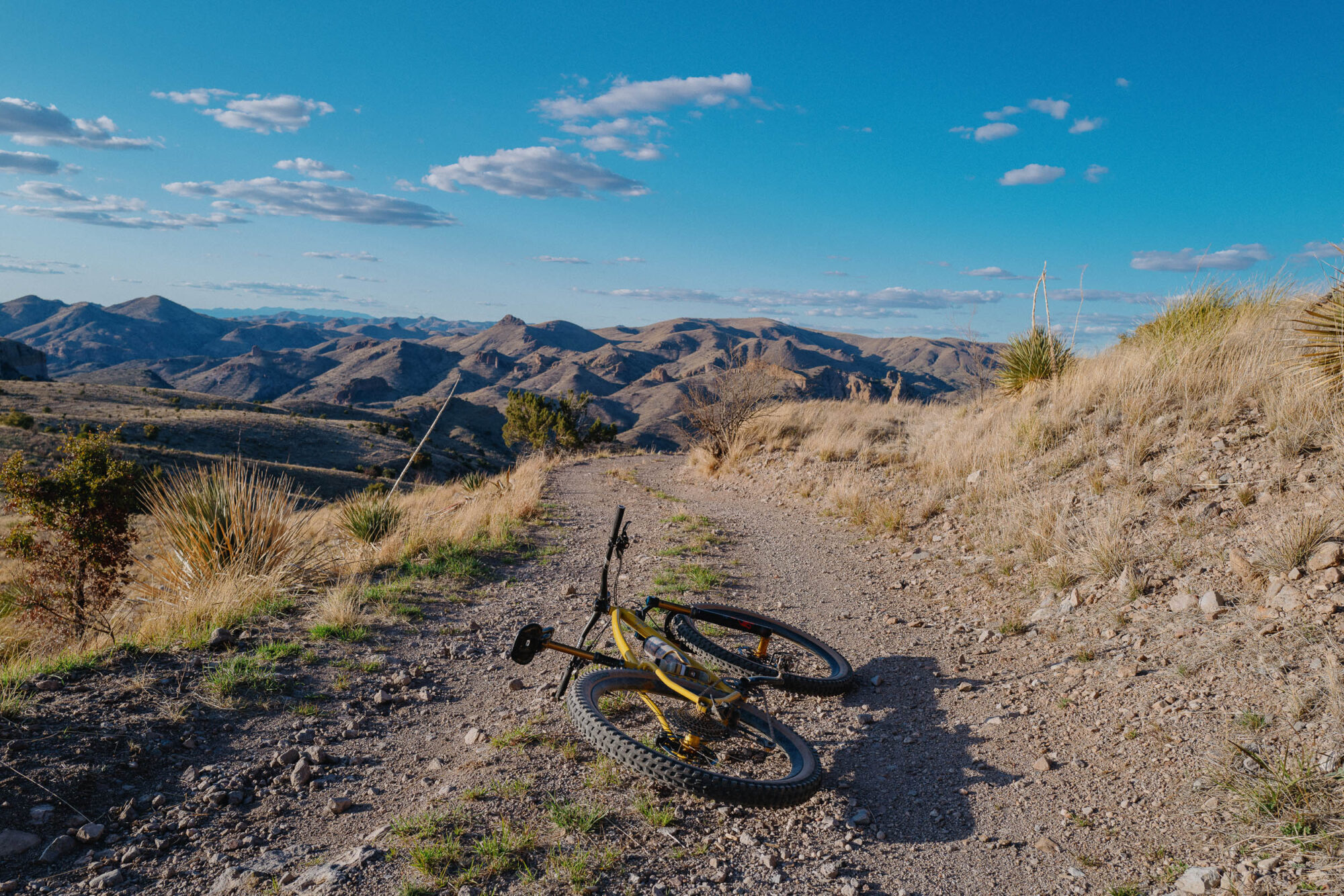
Most of the biologists, non-profit beneficiaries, and ranch staff are on the course in one way or another, either riding with us, slinging snacks, or providing logistical support across this expansive landscape. Ruta del Jefe is a group effort. The humble family that consolidated and donated the land to form Cuenca Los Ojos stands outside of their home on the ranch and refills water bottles by hand. They thank us for being there and provide jokes and encouragement. I have a hard time leaving this aid station, tucked into a stunning canyon alongside a year-round stream. Ganesh Marin catches up to me here and mentions that he lived in the adjacent casita for almost a year during the COVID-19 lockdown. He has several cameras on this watershed and has spotted jaguars visiting it many times, right where our water crossing was.
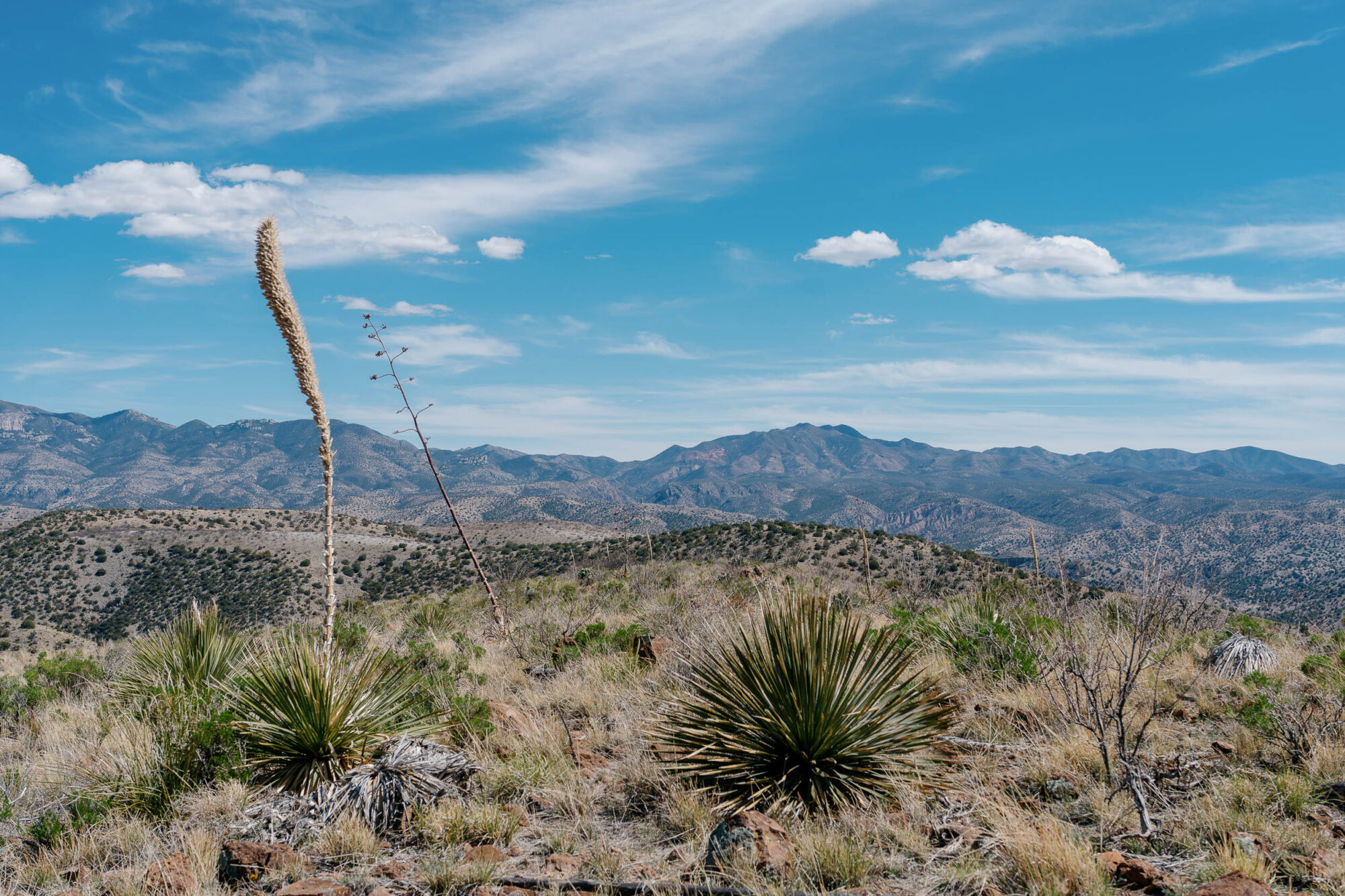
Finally, we head up the hill, and I get a private tour of Marin’s work as we pedal through the deep recesses of Cuenca. He points to ravines where he has cameras, places he’s tranquilized bears and put GPS collars on them, and places where he knows different species frequent. From the road, it becomes clear that there is life in every direction, tucked just out of sight beneath the Madrean Oak trees or slinking through rocky gullies. This landscape provides ample cover for mammals, reptiles, and birds to live and die without being spotted. Scat covers the roadways, pawprints linger in the muddy spots.
We weave up a hill to the friendly faces from Tucson’s own Campfire Cycling. I get a quick clean and lube after all the creek crossings and dust coating and gorge myself on all the traditional Mexican candies I can. Something about watermelon and Tajín really hits the spot. Once again, people linger and congregate, chatting, taking photos, and snacking. The Campfire crew managed to bring the same hospitality of their shop to a remote hilltop. When it’s time to move on, we pedal straight into the Animas Valley from the opposite side we saw yesterday, a powerful tailwind boosting us through the “easiest” miles of the day. And then, the grasslands yield to steep hills once more.
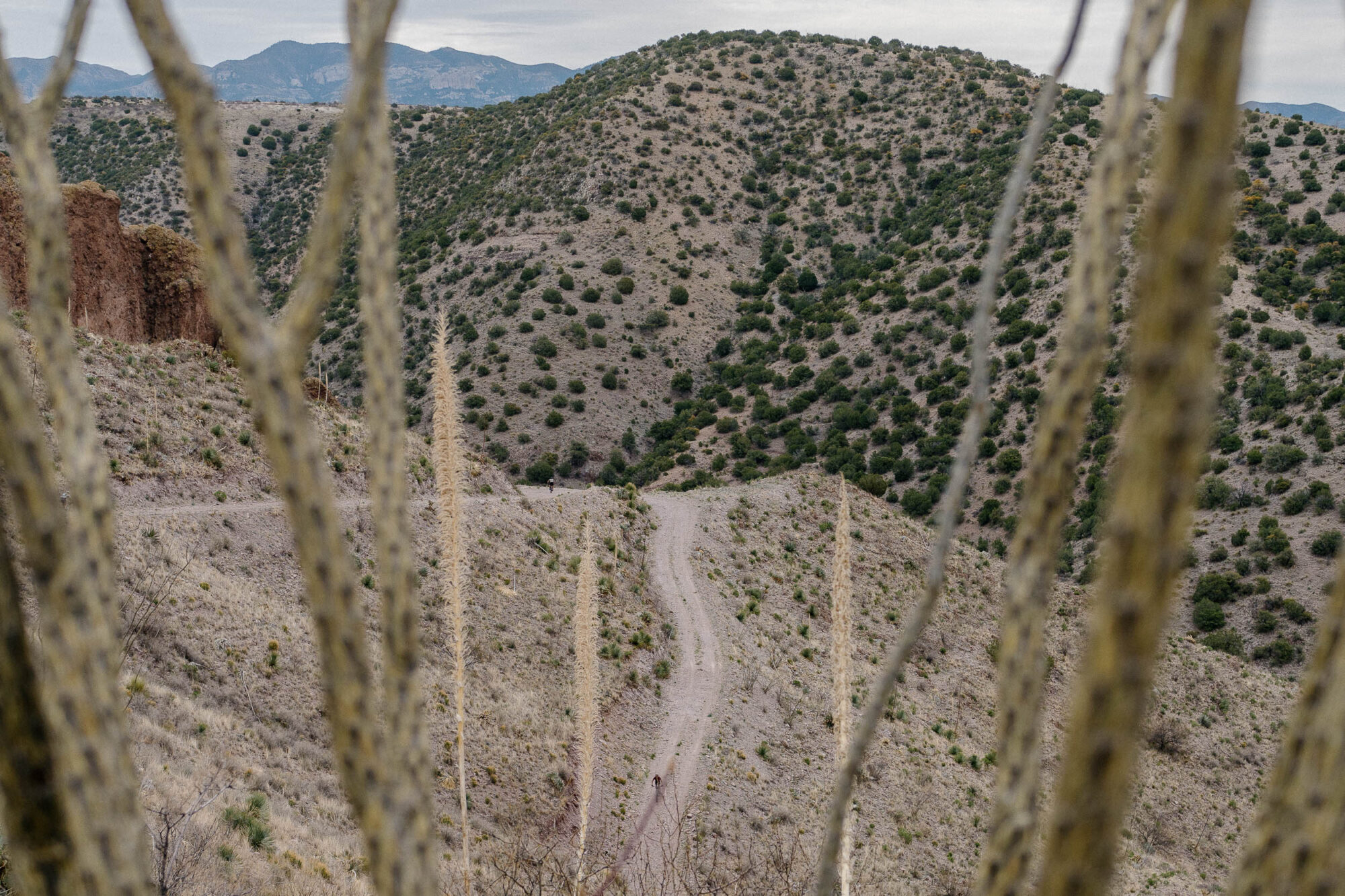
Some of the climbs and descents erase all thoughts of purpose-built trail. We are free-riding squiggly lines of best fit, stringing together high points through plummeting canyons. The final aid station of the day is presented by the Borderlands Restoration Network. Rodrigo Sierra-Corona and his crew are serving cookies and sodas and pouring tequila shots. Rodrigo snaps photos, cracks jokes, and provides ecological tidbits. Everyone remarks that we “only” have a few hundred feet more climbing before repeating the raucous and breathtaking descent from the day before.
Those few hundred feet are quite a challenge. This landscape defies measurement; you experience it on its own terms. When we arrive back at camp, the mood is celebratory in a fittingly demure way. Nobody is here to win anything, and yet we are all here to participate and to lift one another up. A makeshift bar slings drinks from a horse lean-to, people pass around bags of Takís, and I walk down to the creek with Ganesh where we dunk our heads in the same frigid waters his beloved bears frequently frolic in.
As evening rolls around, an enthusiastic line forms for burritos. Everyone compares notes from their time out on the course as more riders filter in at their own pace, mentioning how hard it was to finish the ride because there was simply so much to see.

Night falls, and the cacophonous chorus of laughter and conversation in English and Spanish rises. The warmth of a gathering of conscientious humans crescendoes as Jimmy Rosas from the Crust/Fabríca de Rosas team begins a Norteño music DJ set. In spite of the challenging day on the bike, almost everyone dances, kicking up a veritable haboob in the communal dining tent-turned-nightclub. It is an exuberant scene, a place where we all dance not in spite of the challenges that we all face but because of them. We know that tomorrow comes more work, and so for now, we speak a wordless, universal language that reminds us all that the hard work is worth it.
El Jefe has not been sighted and positively identified in roughly a year, and yet his existence looms larger than life. His persistence and our public fascination with him is a reminder that one life matters infinitely and can change everything. This is a perfect reminder of why this international gathering of bike-loving activists rallies behind his name.
And, just three months ago, a new jaguar was spotted and identified in southern Arizona, a hopeful sign for conservationists that the species continues to strive toward its historical range in spite of all the obstacles it faces.
Further Reading
Make sure to dig into these related articles for more info...
Please keep the conversation civil, constructive, and inclusive, or your comment will be removed.






